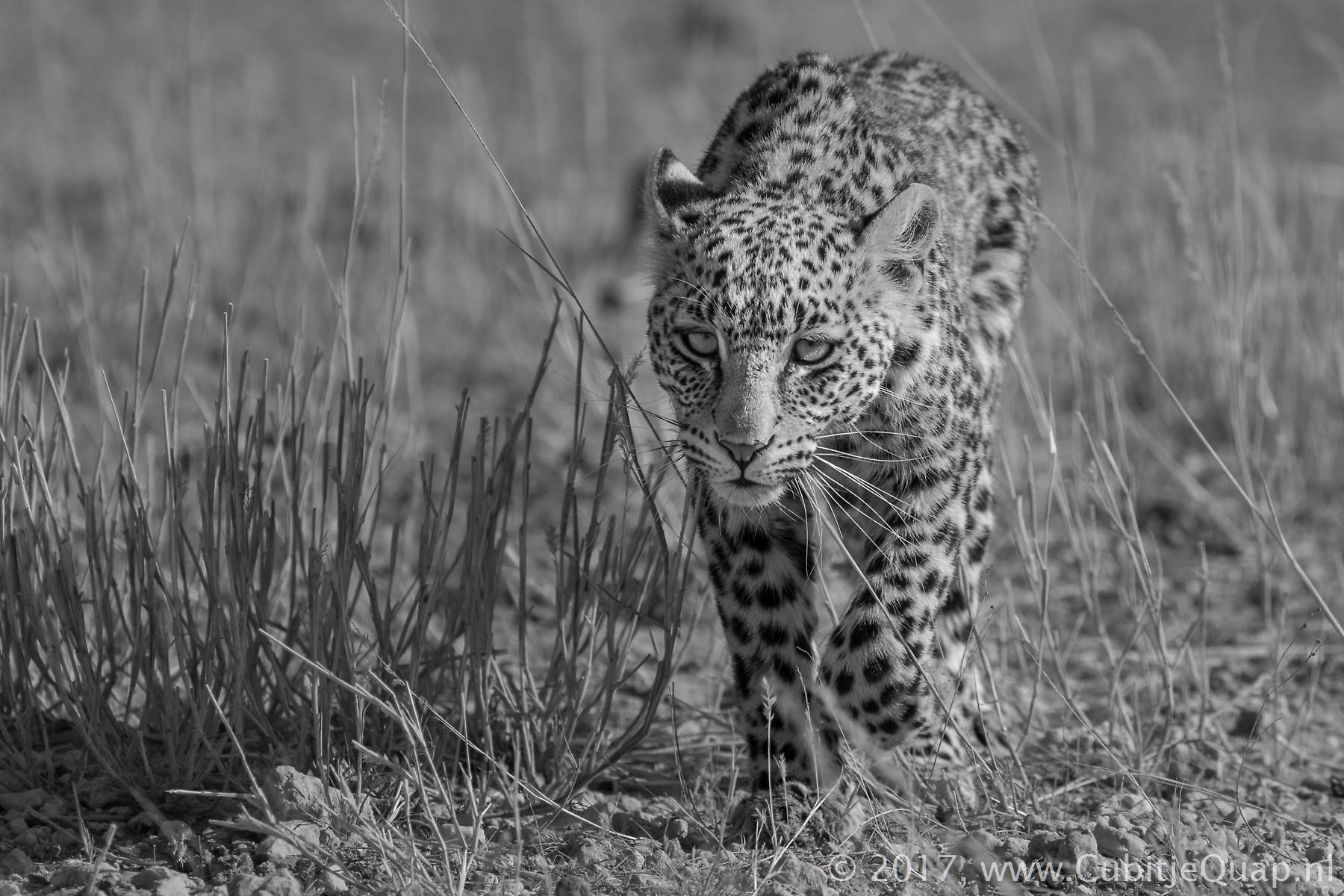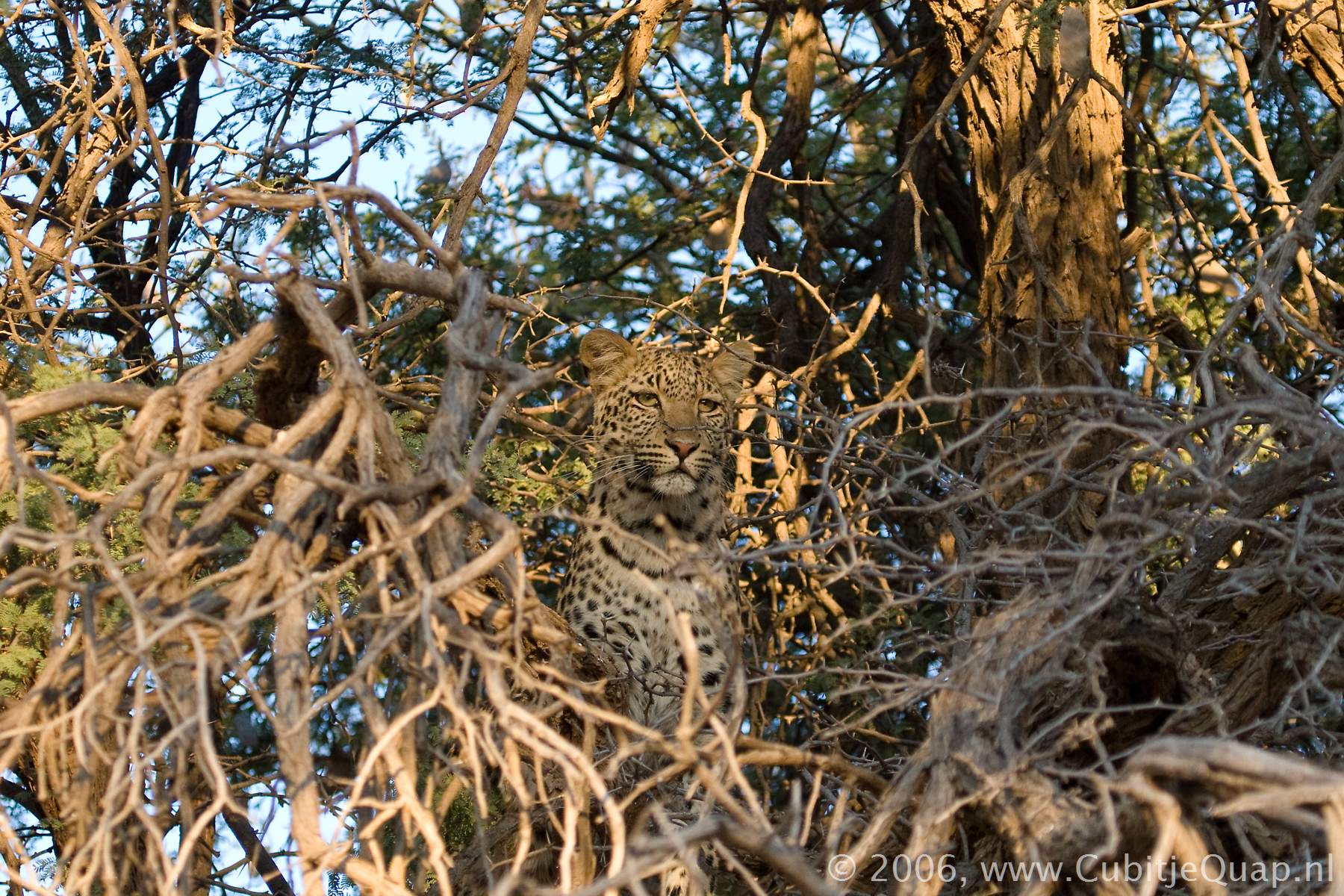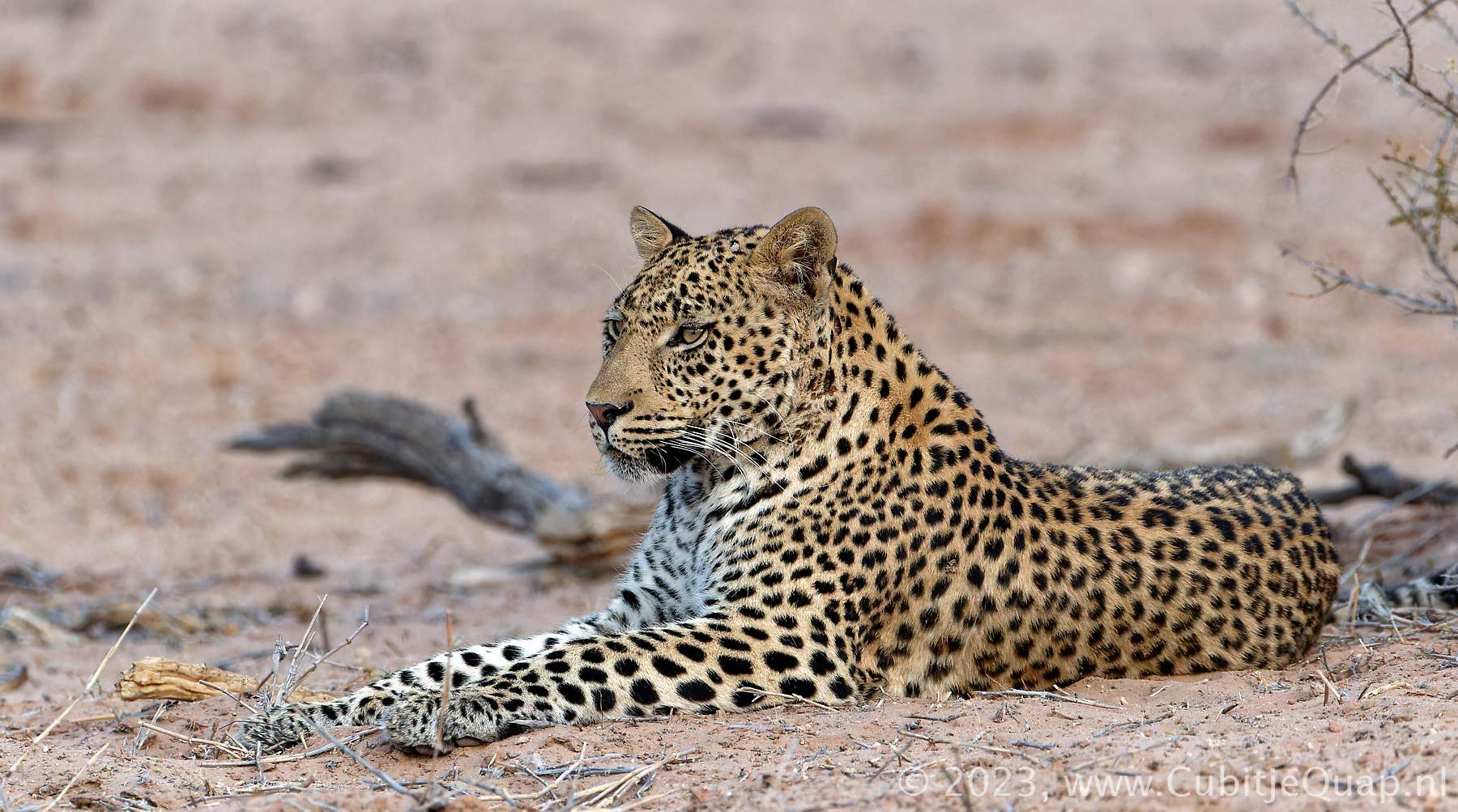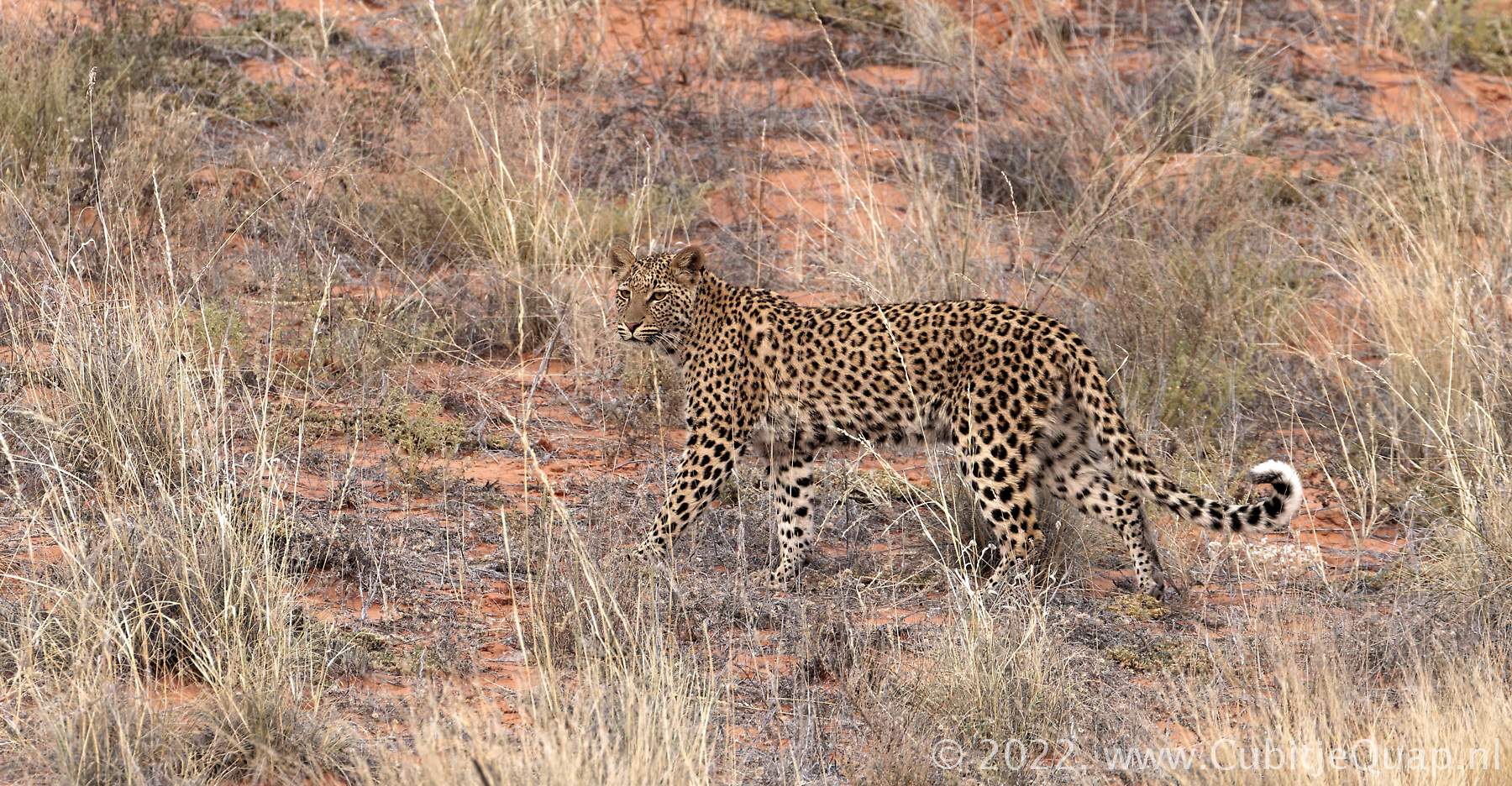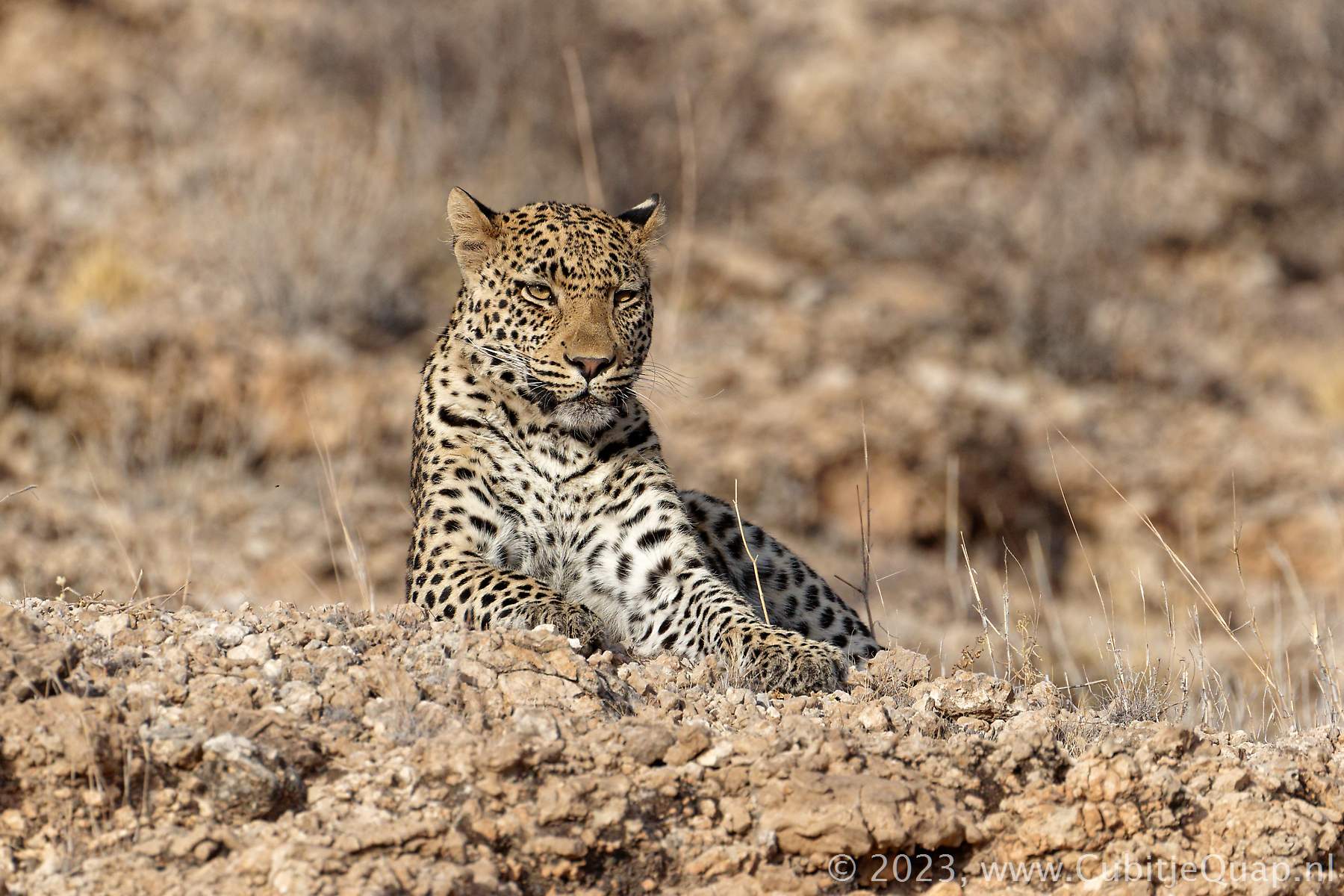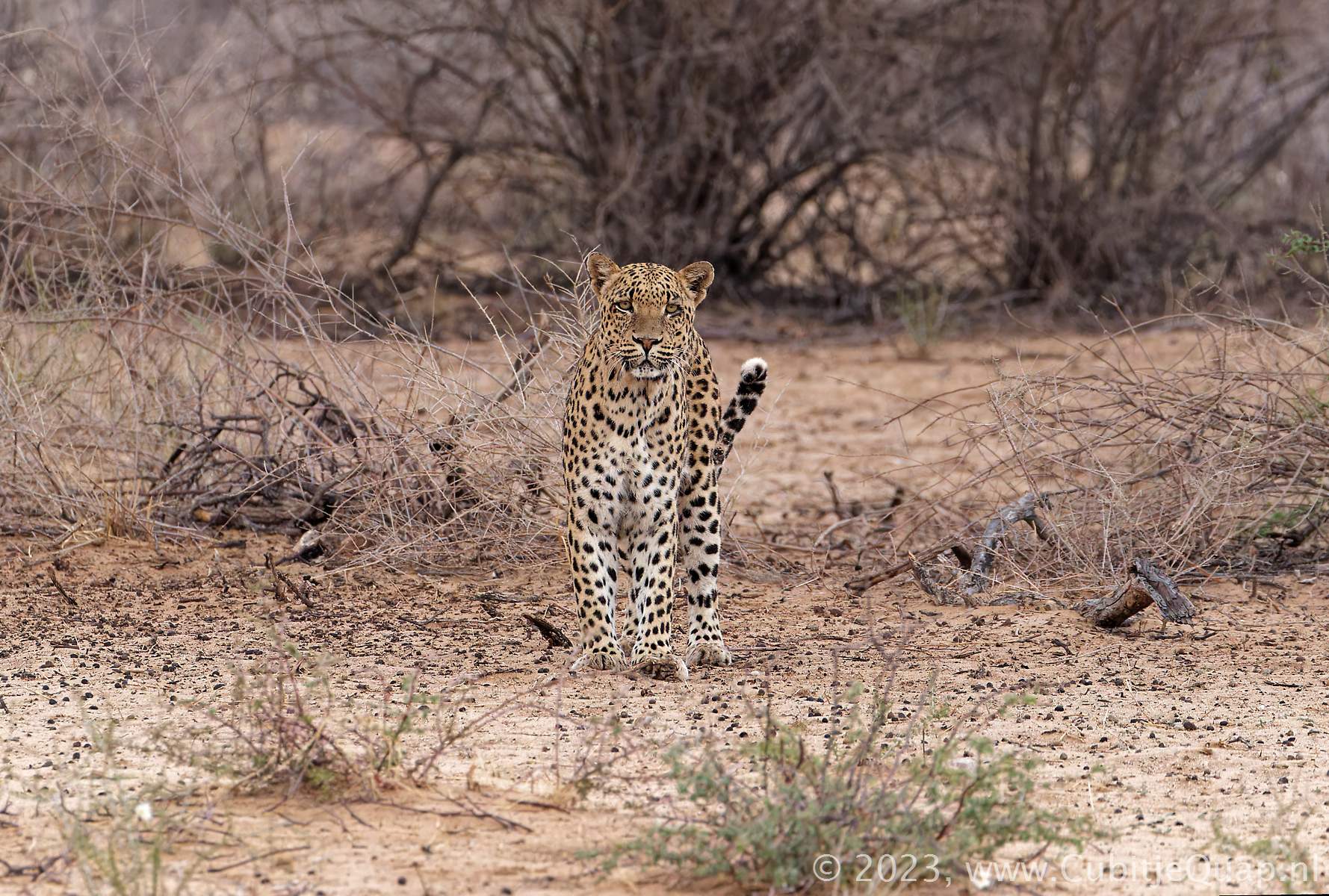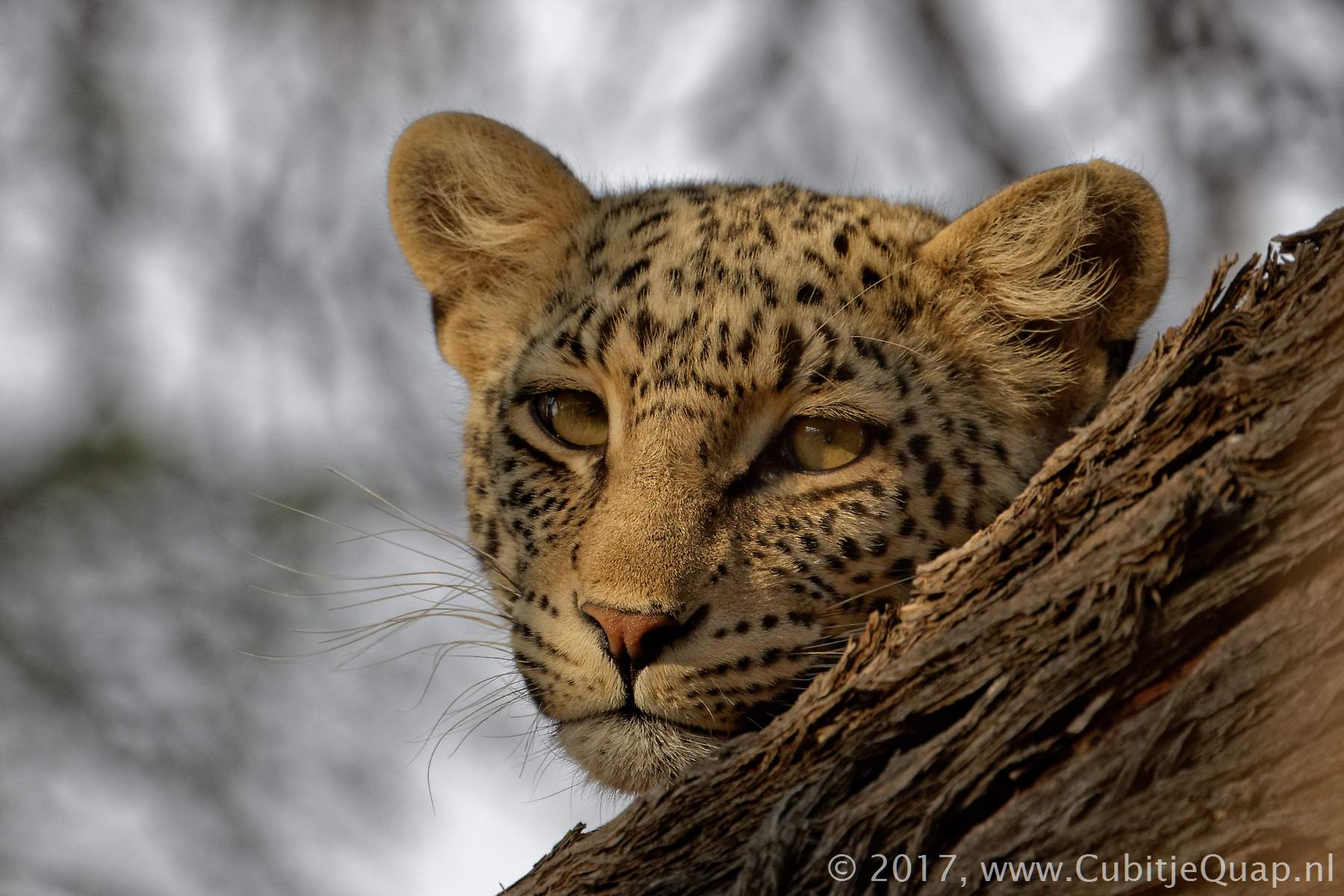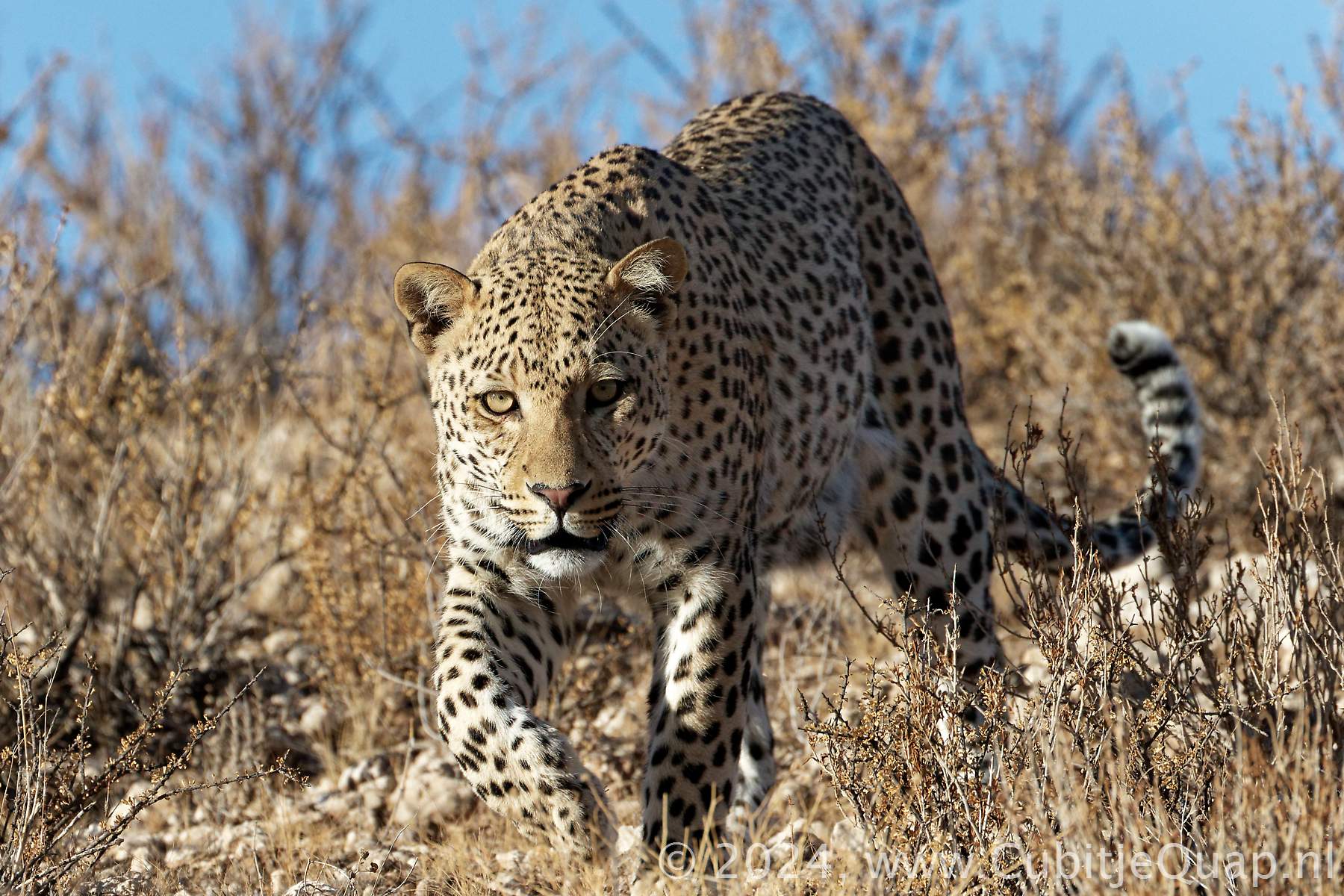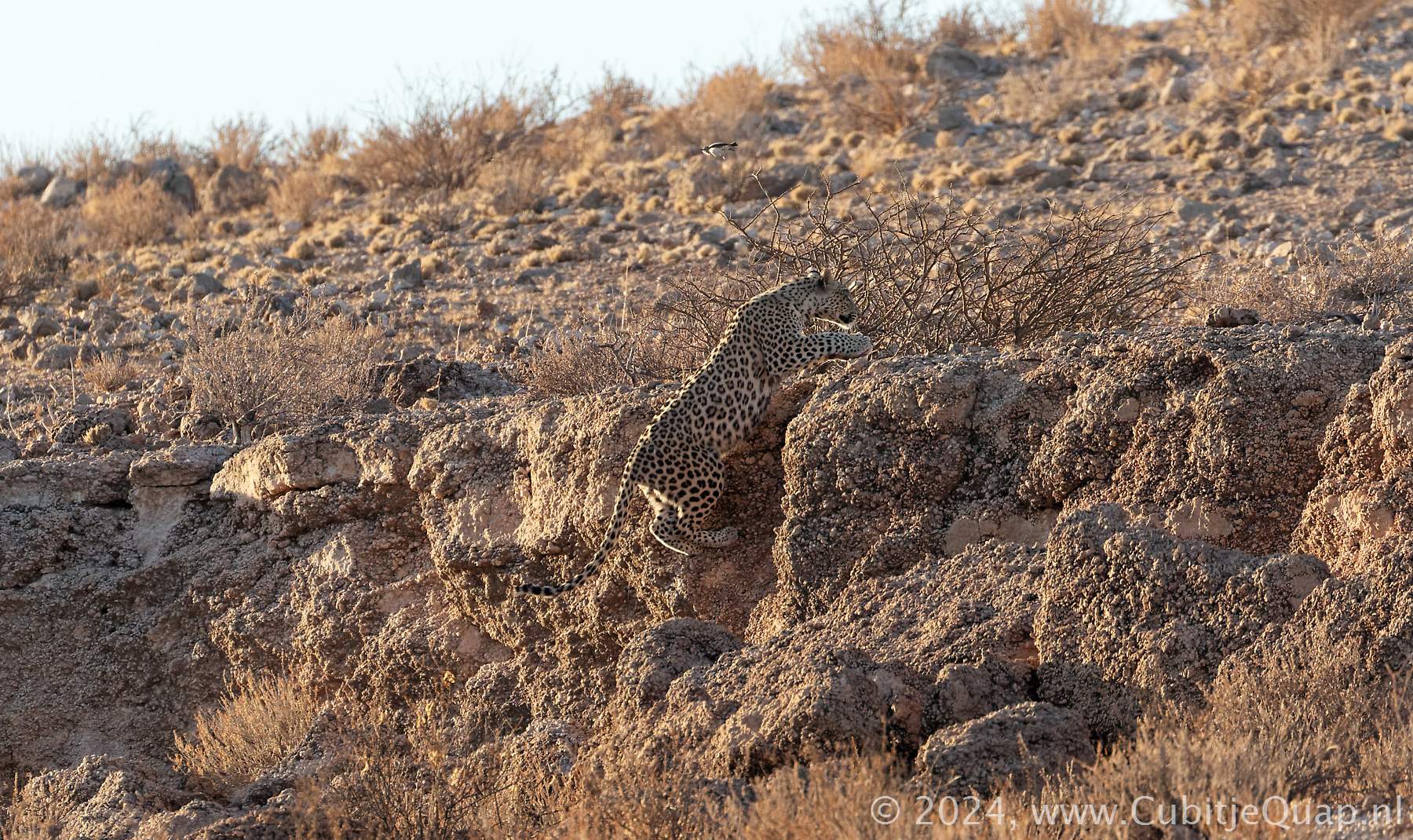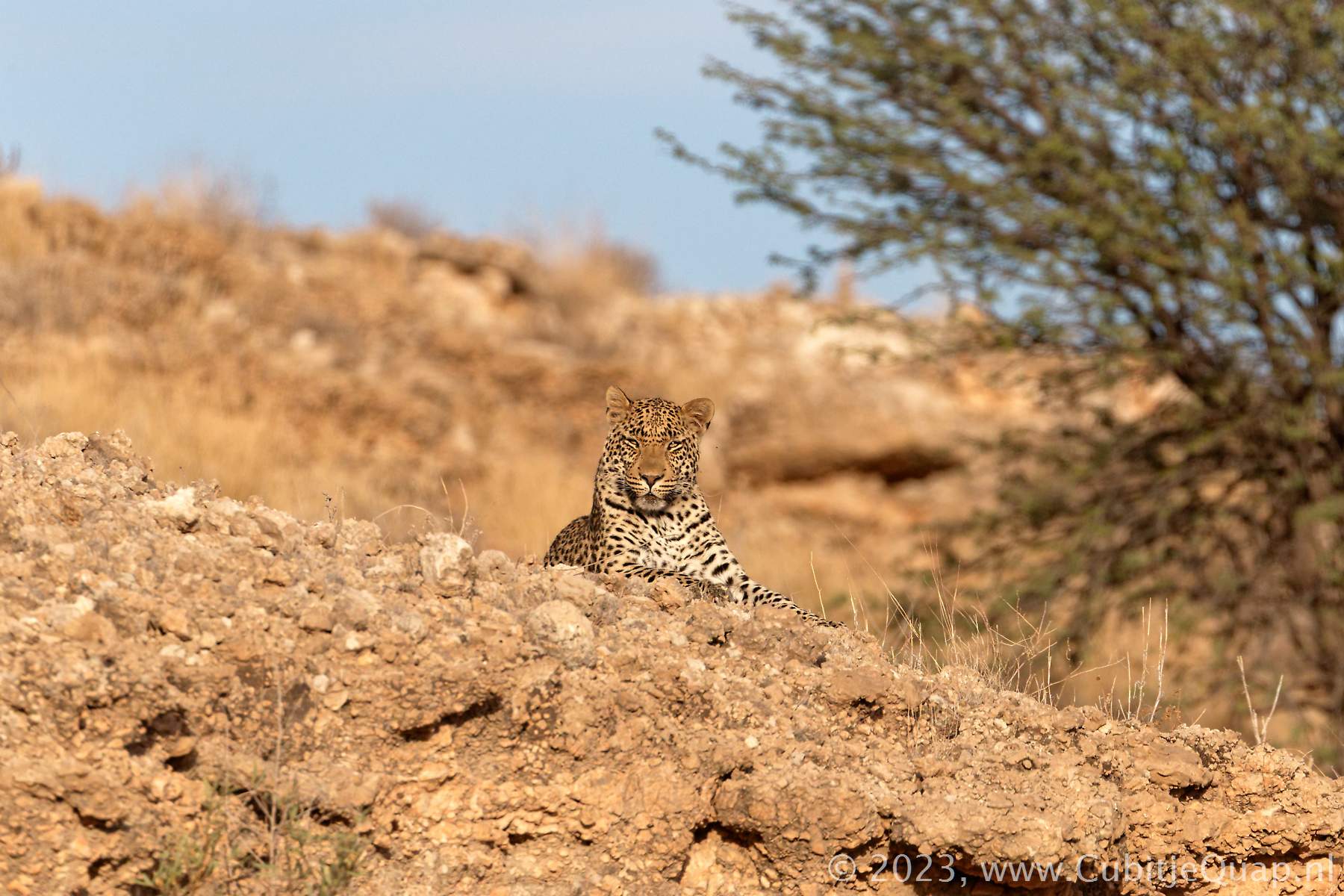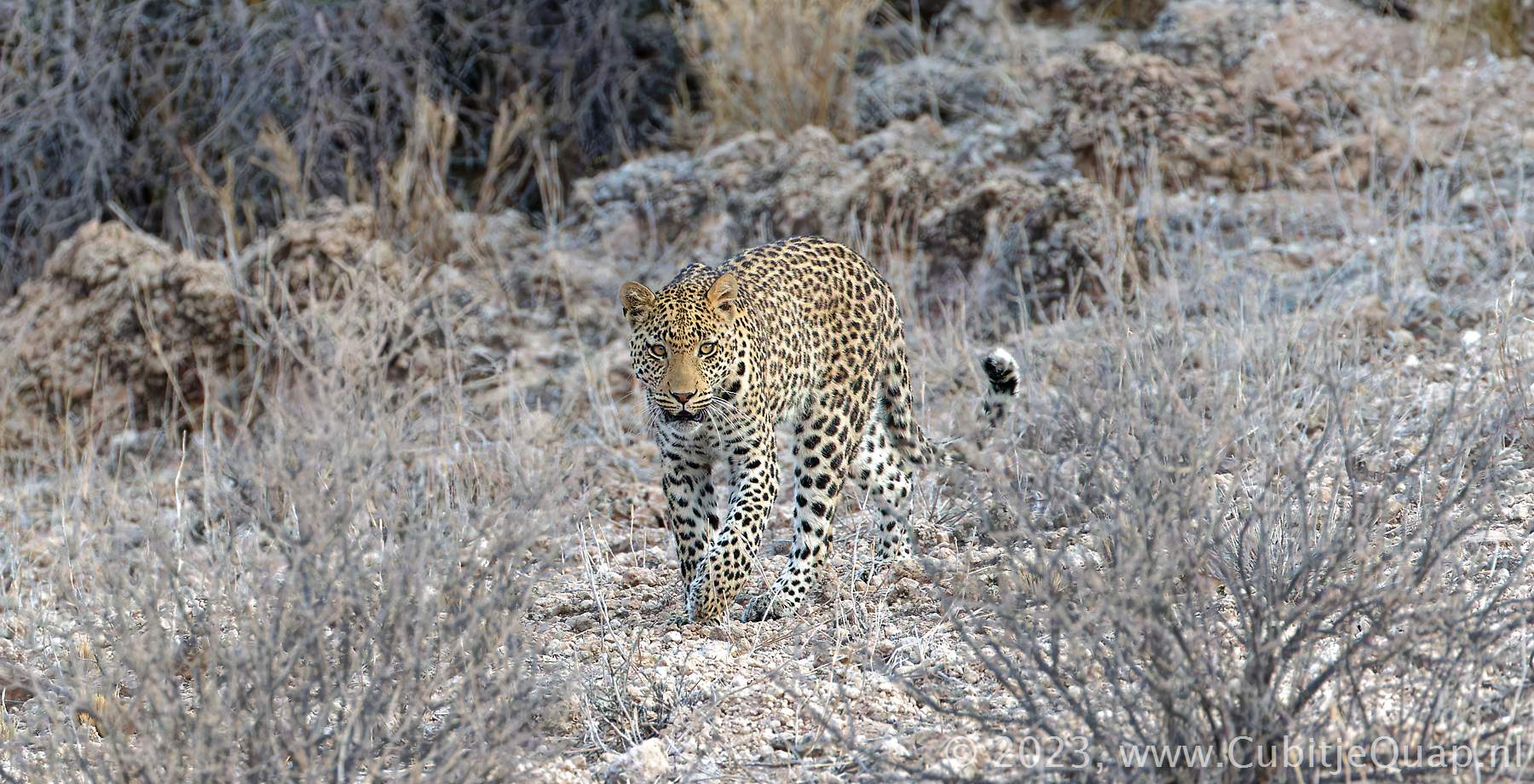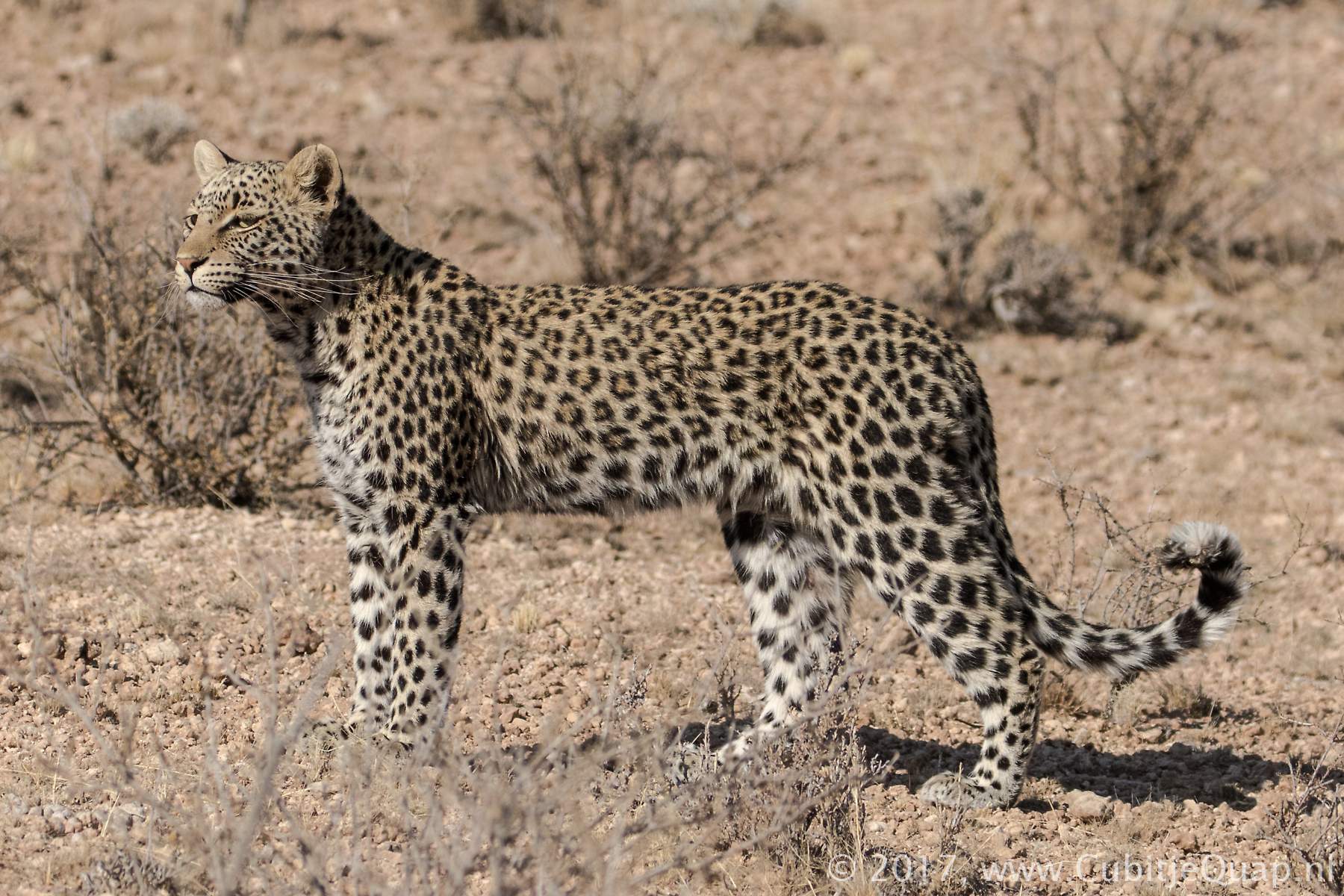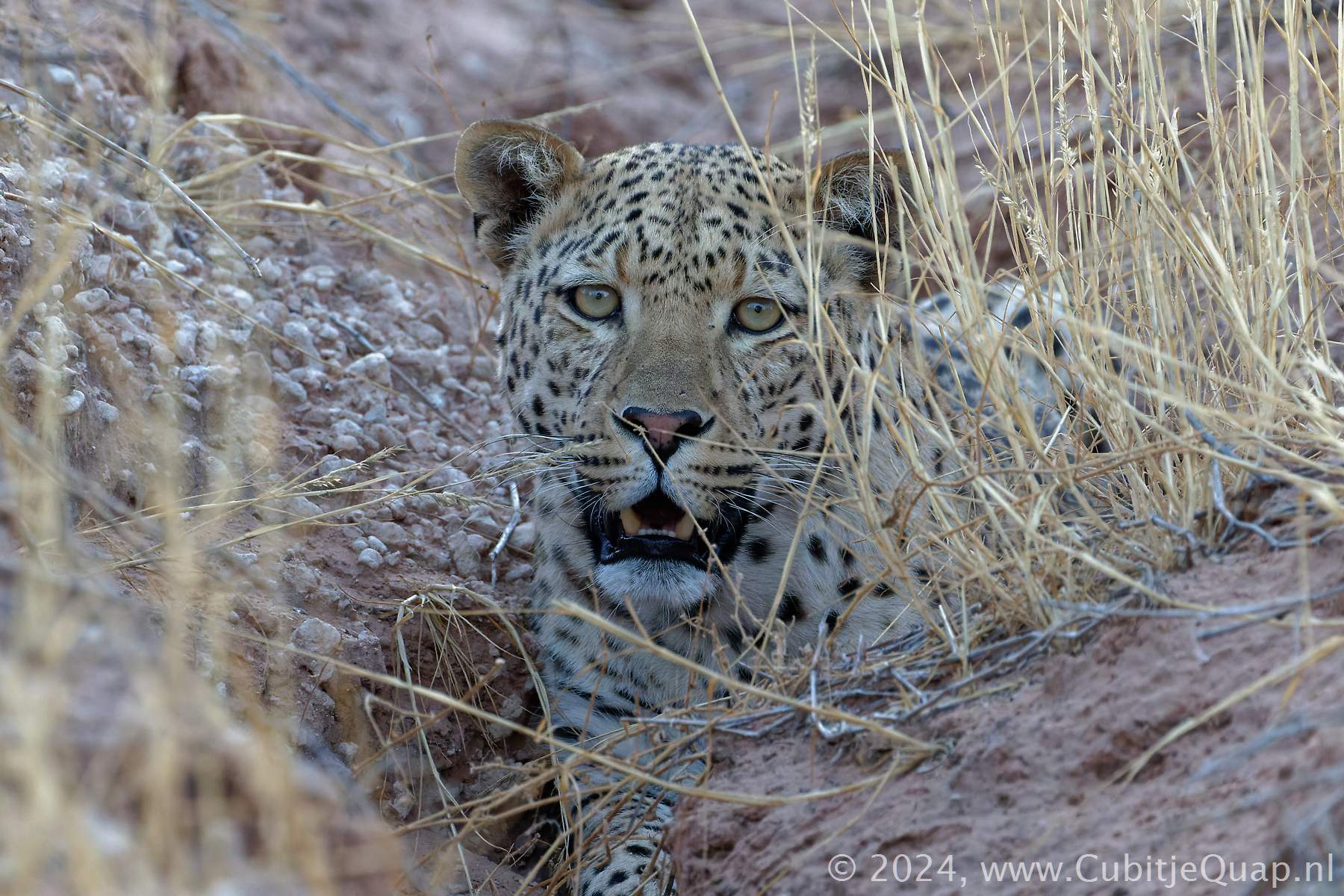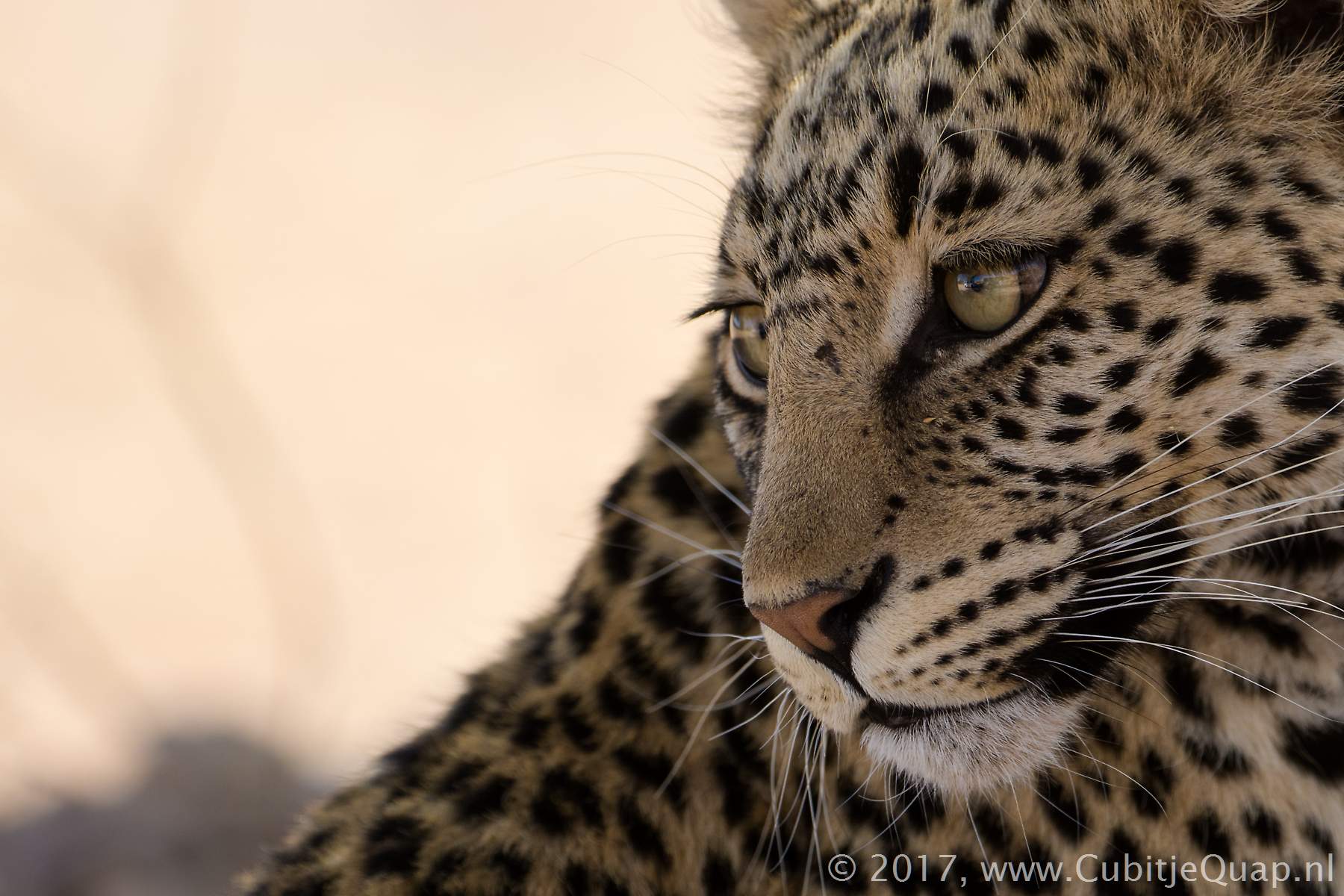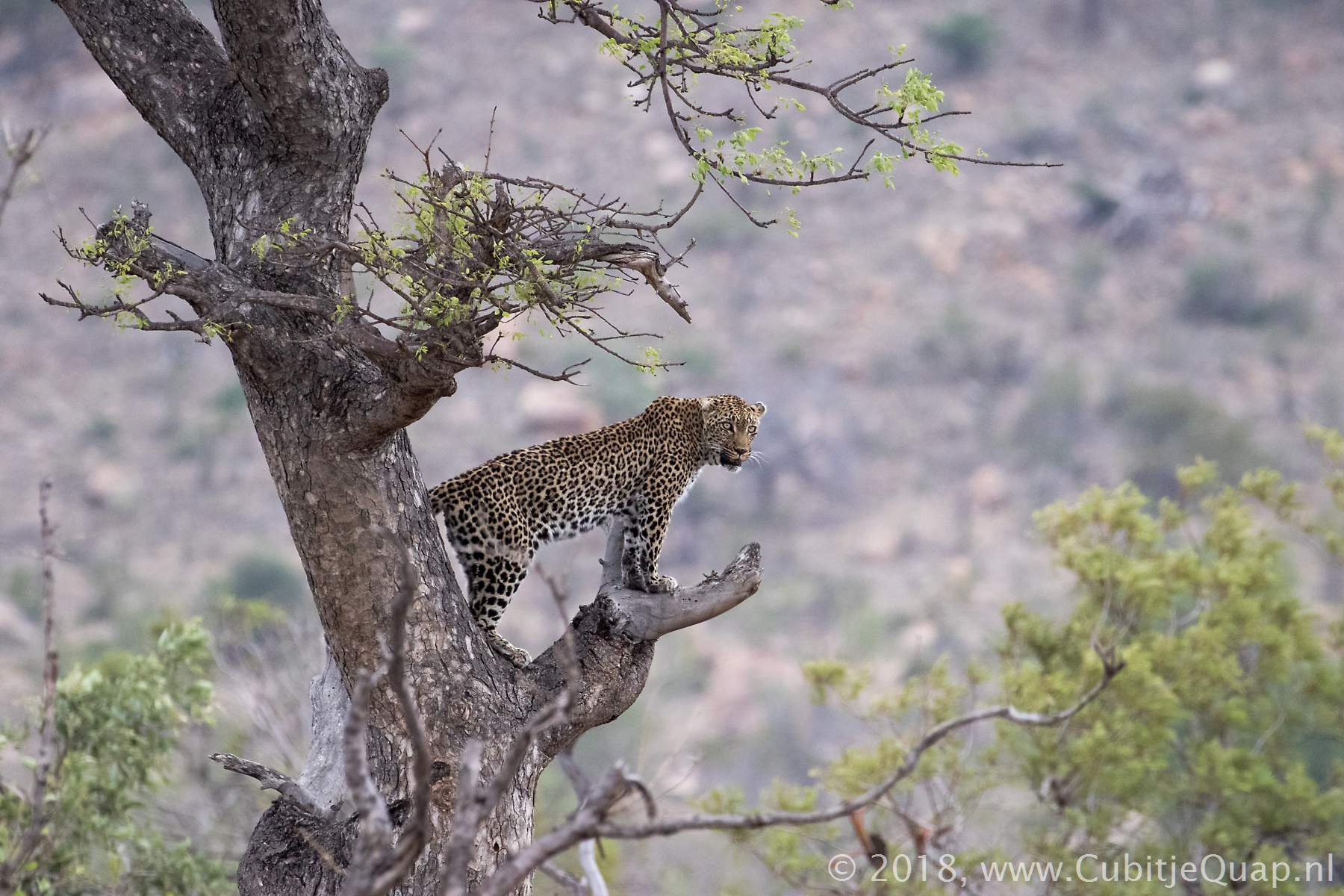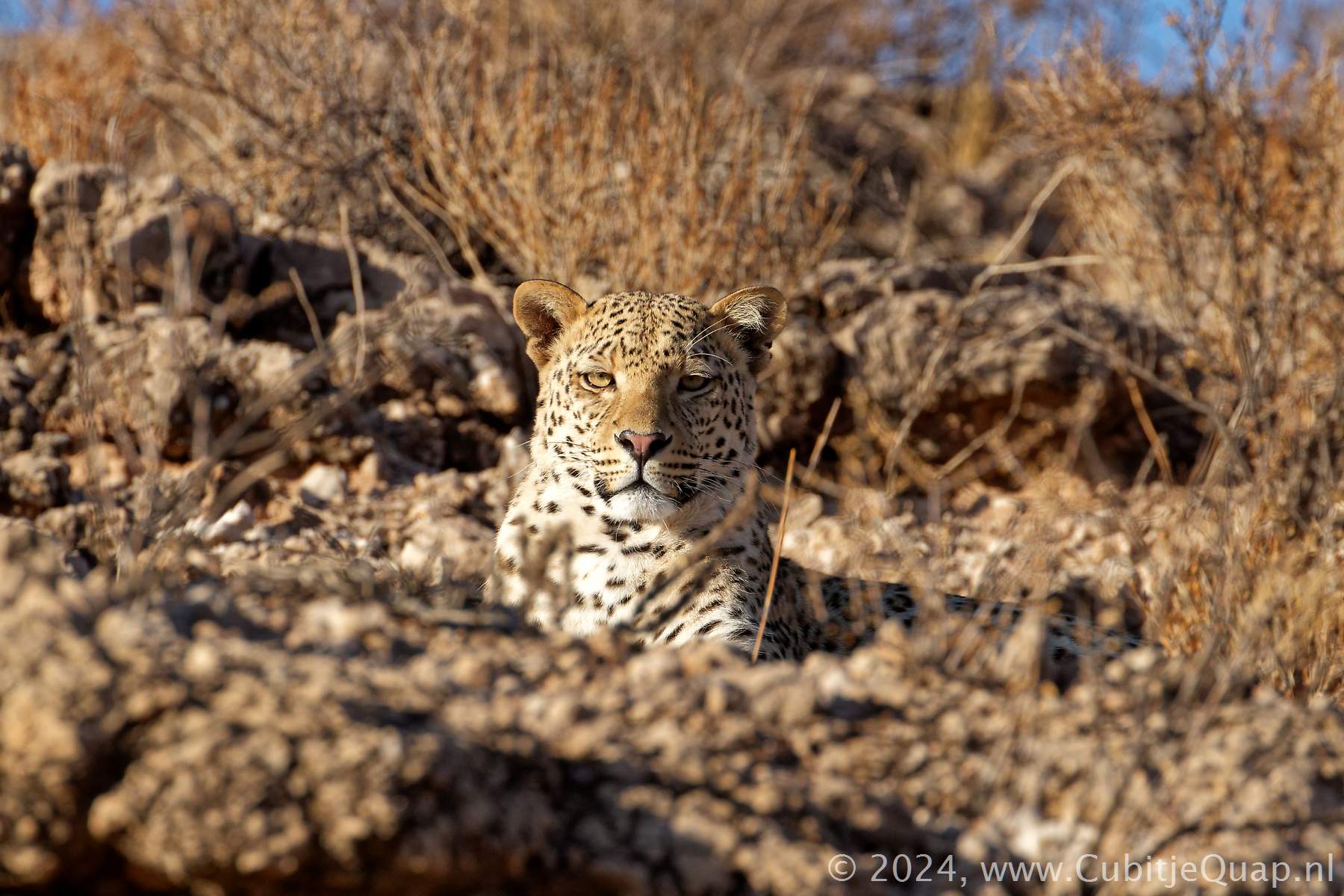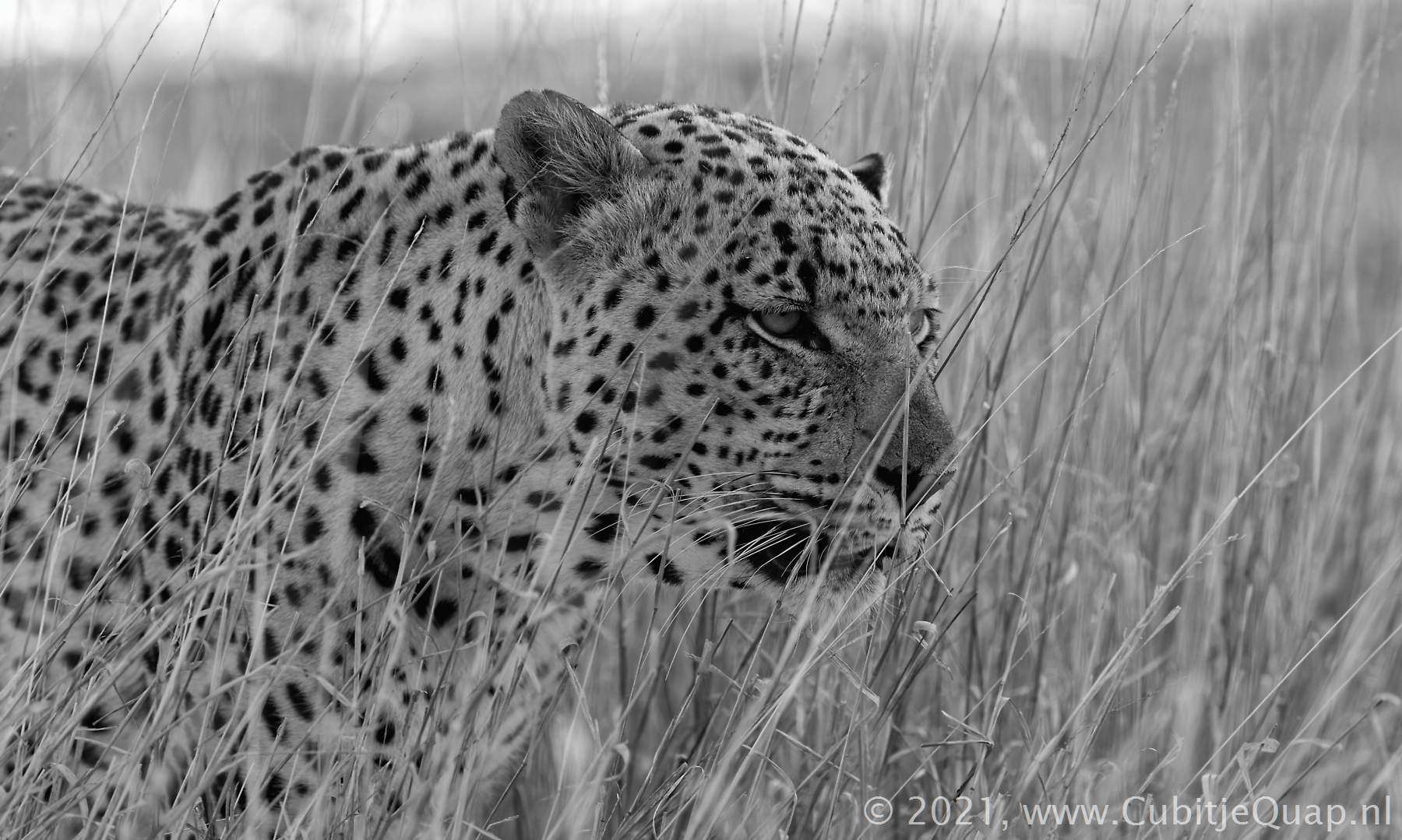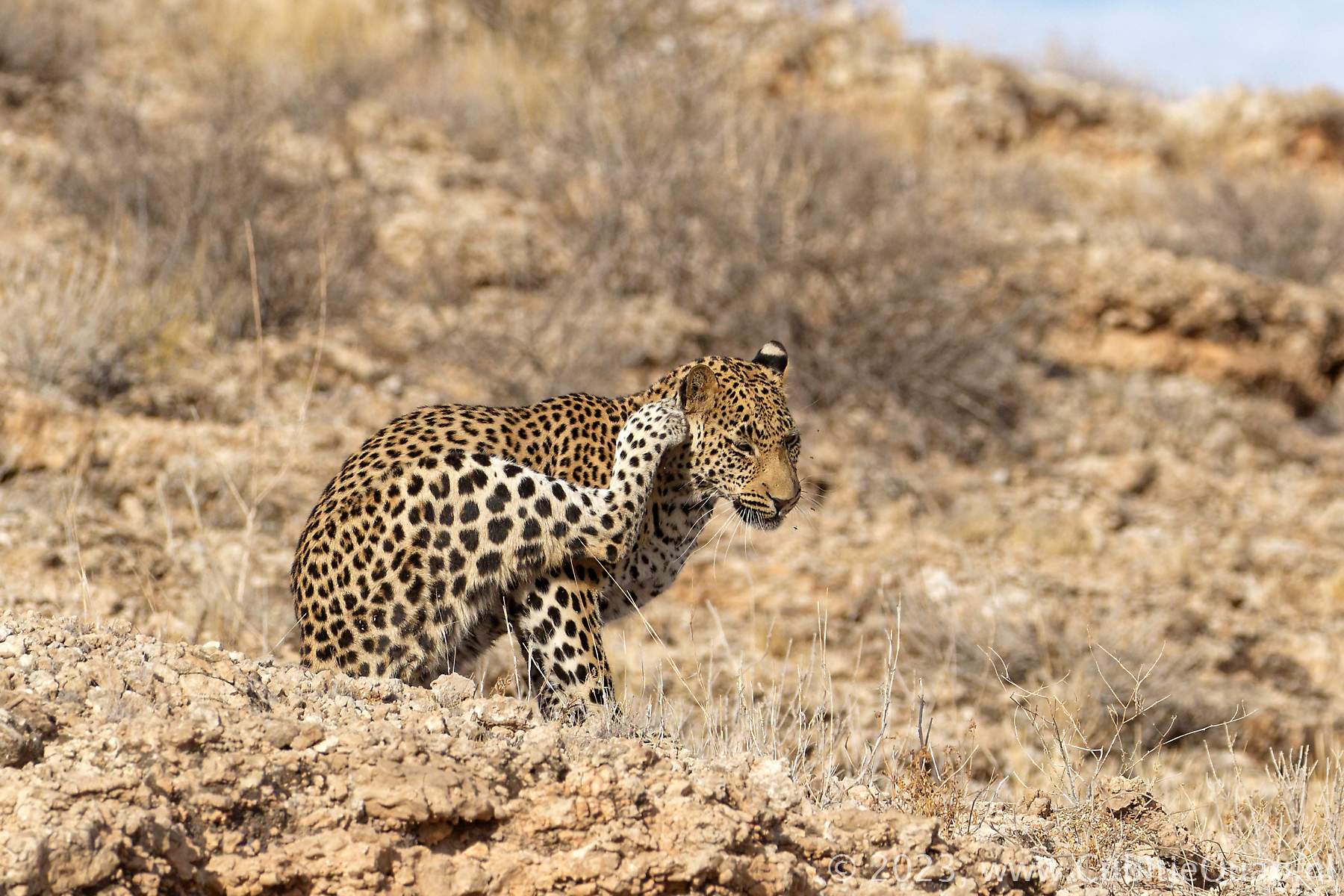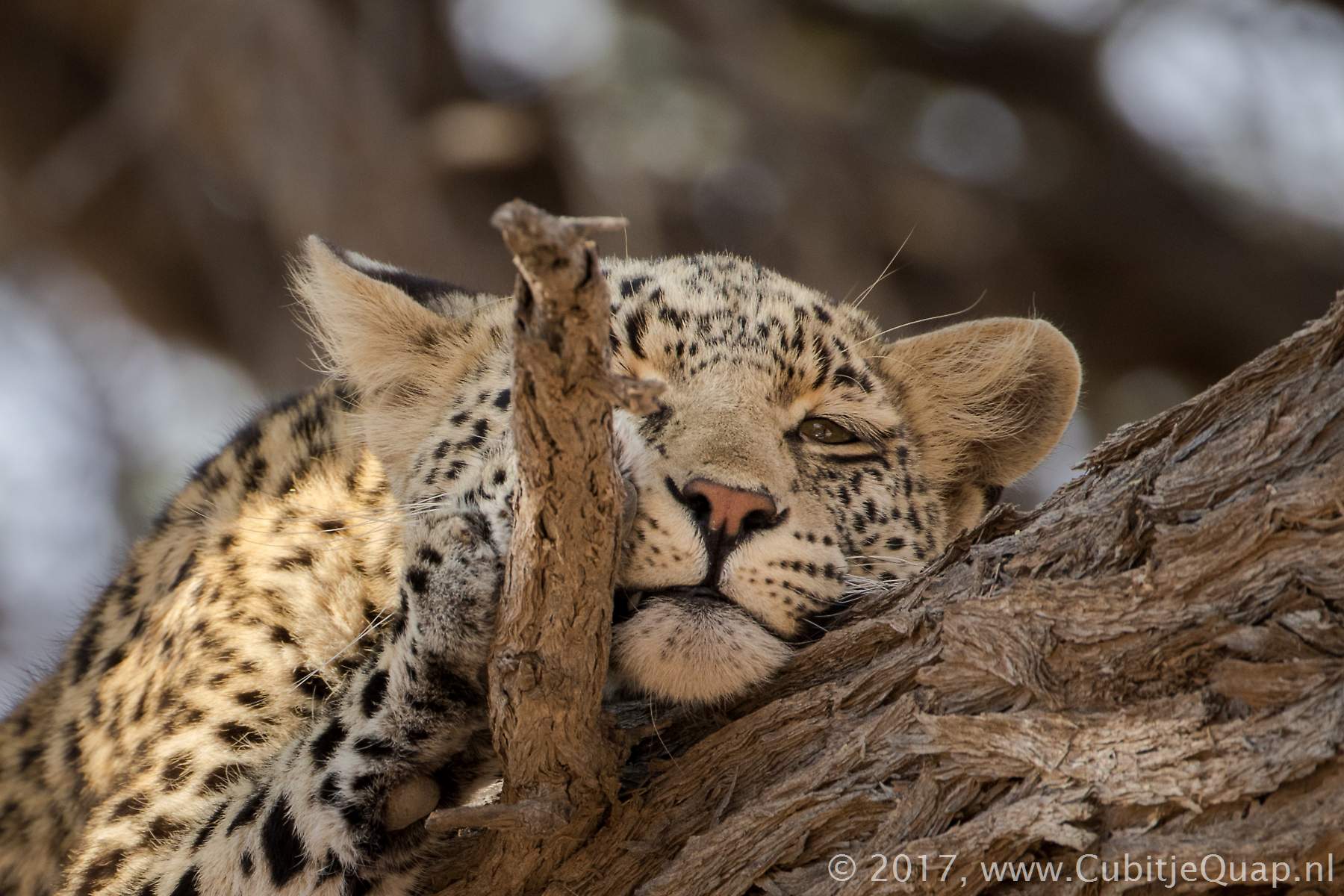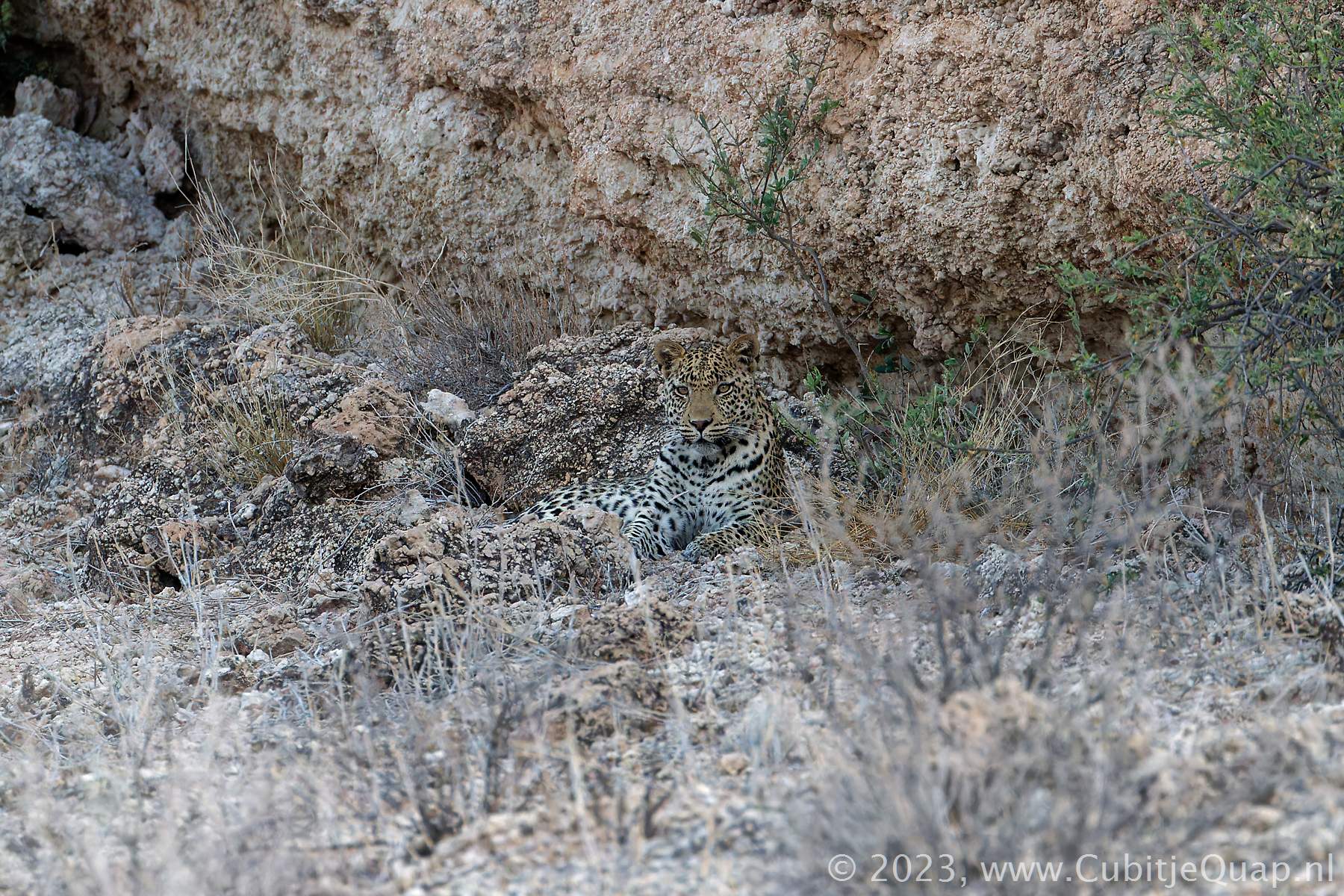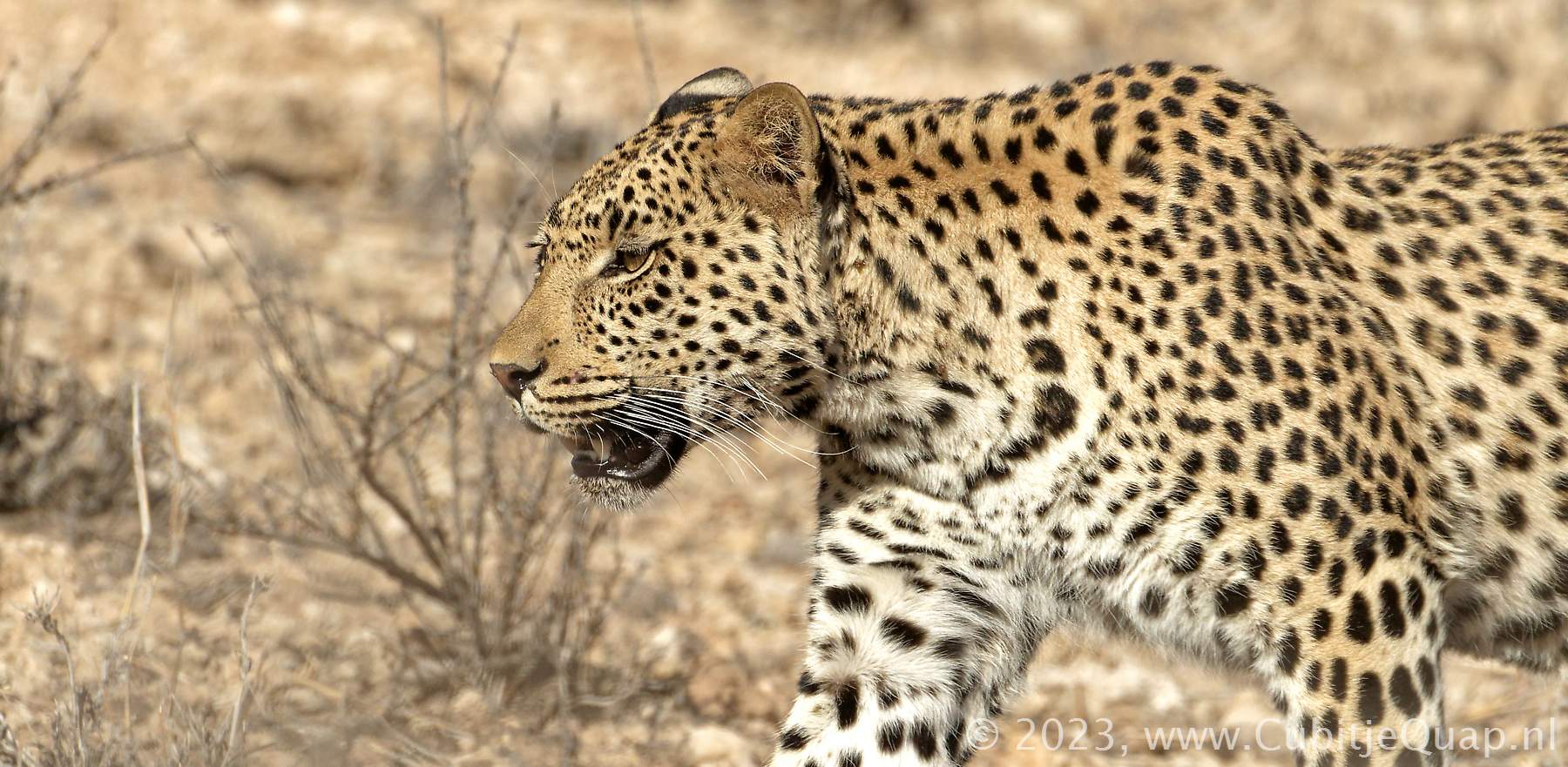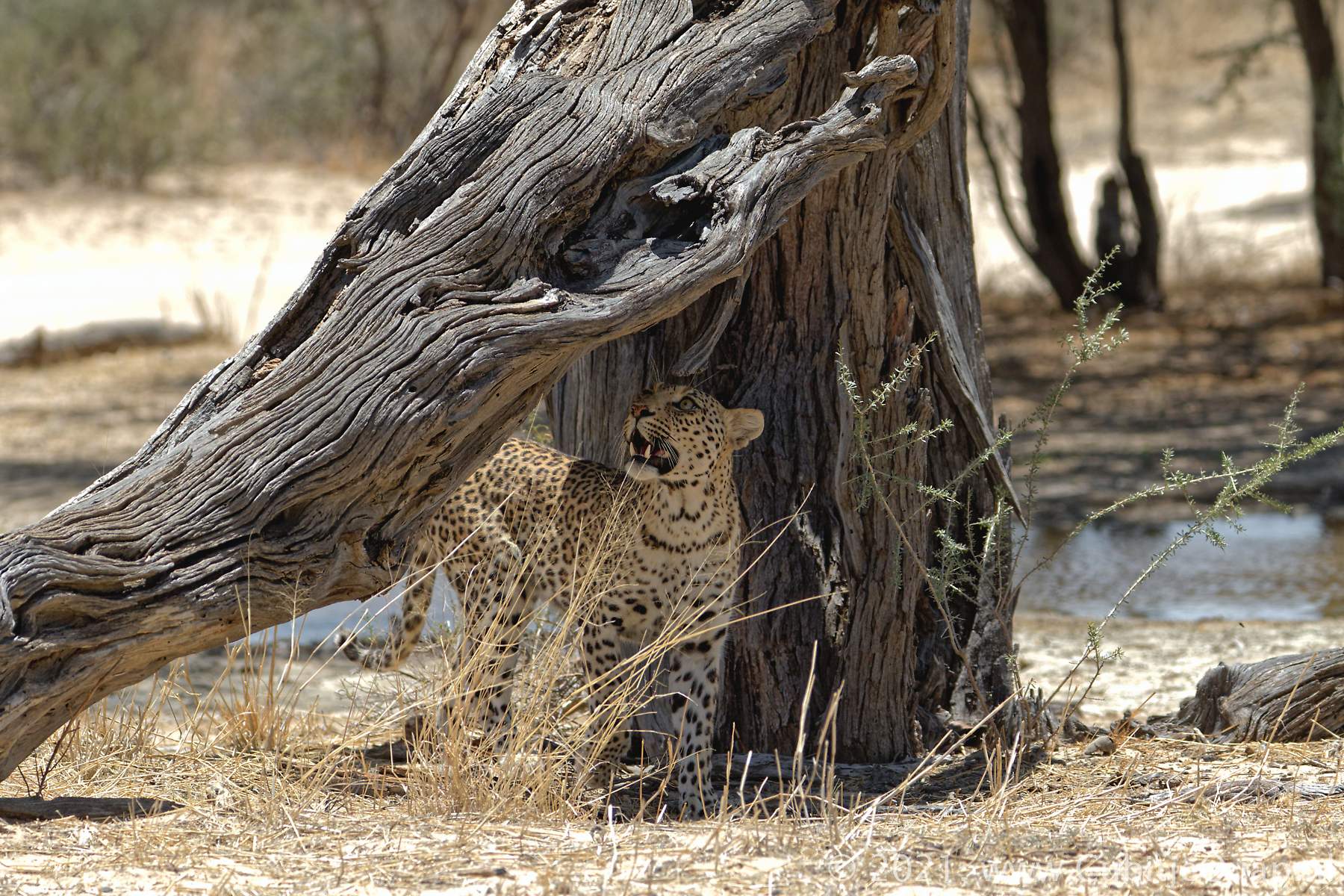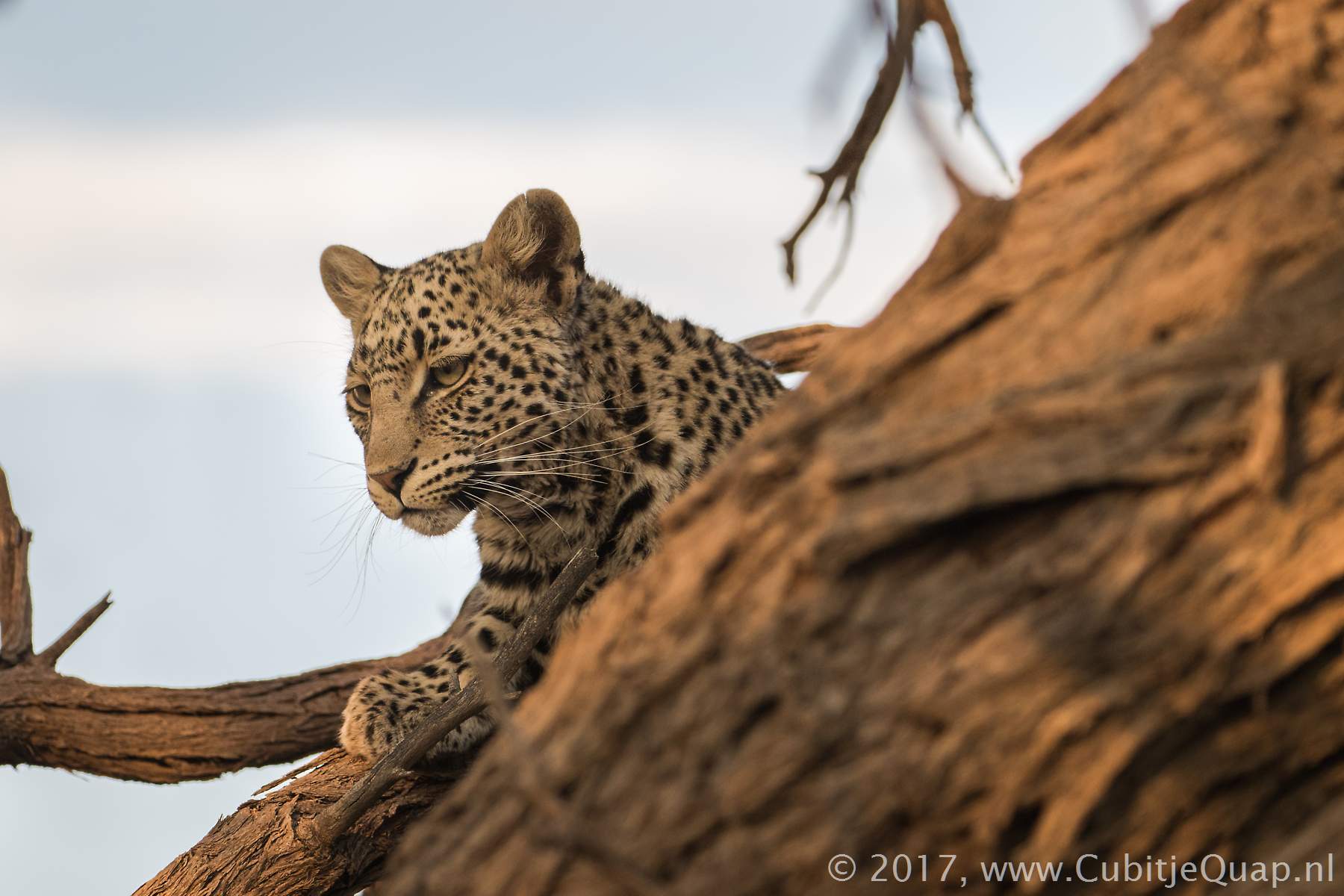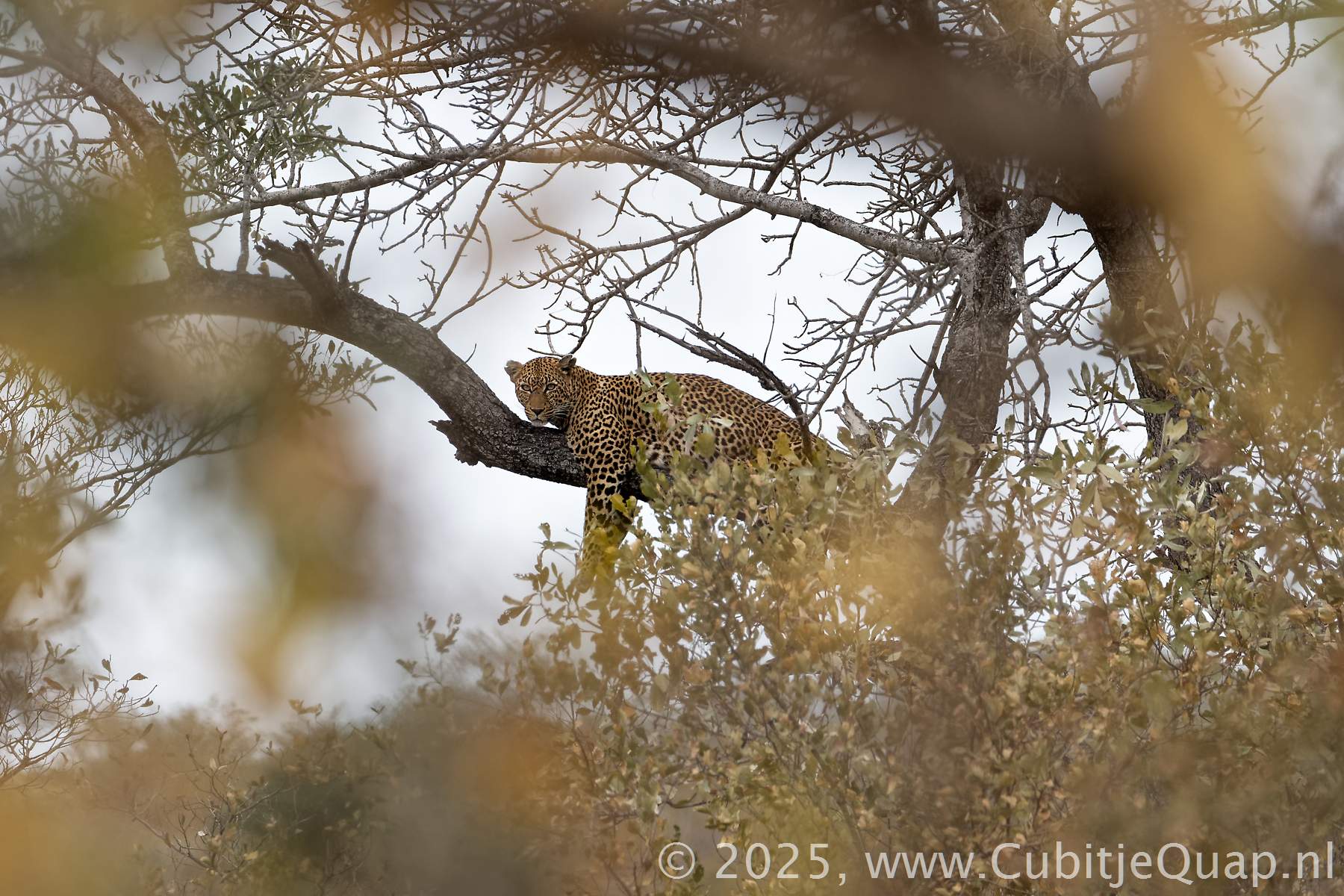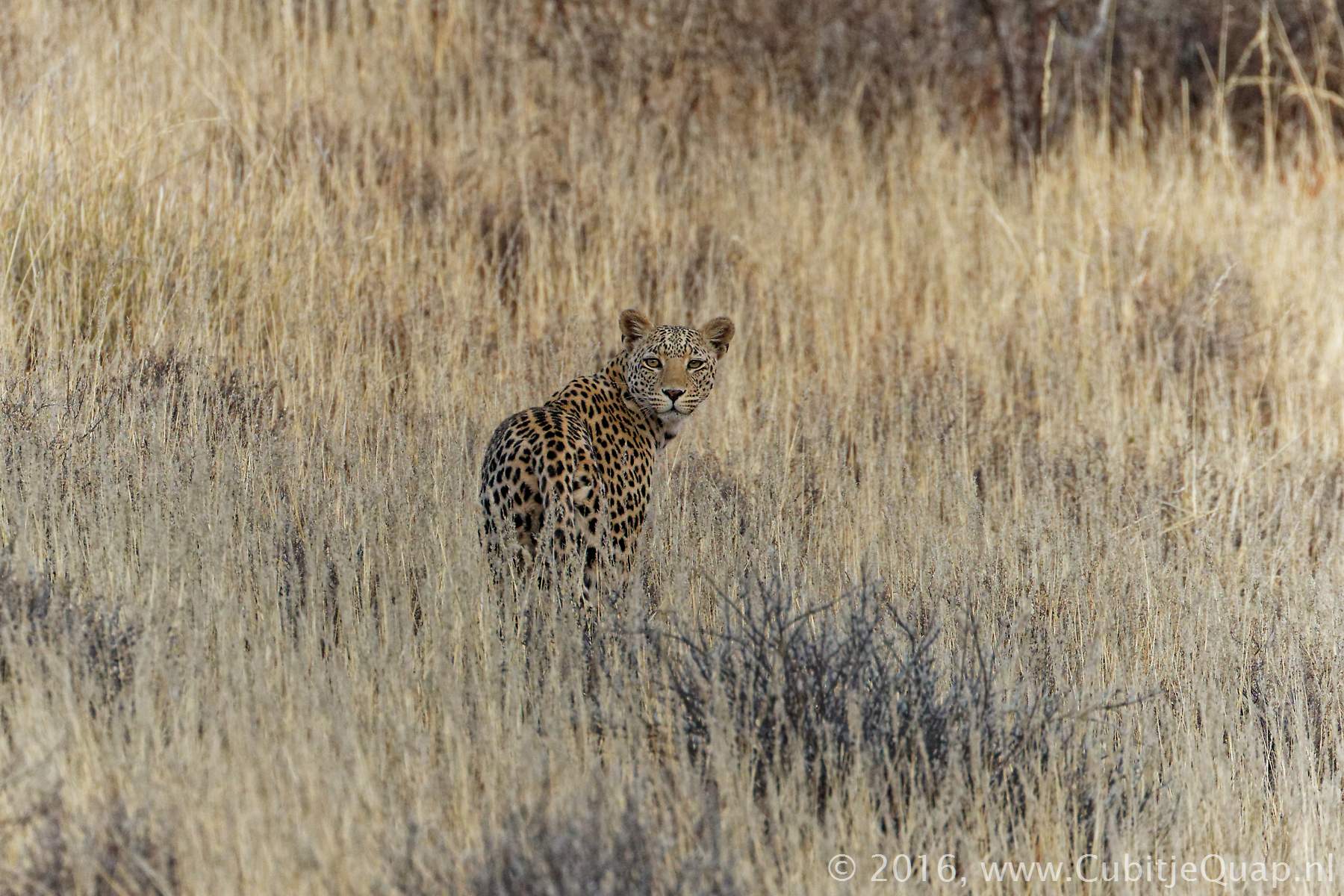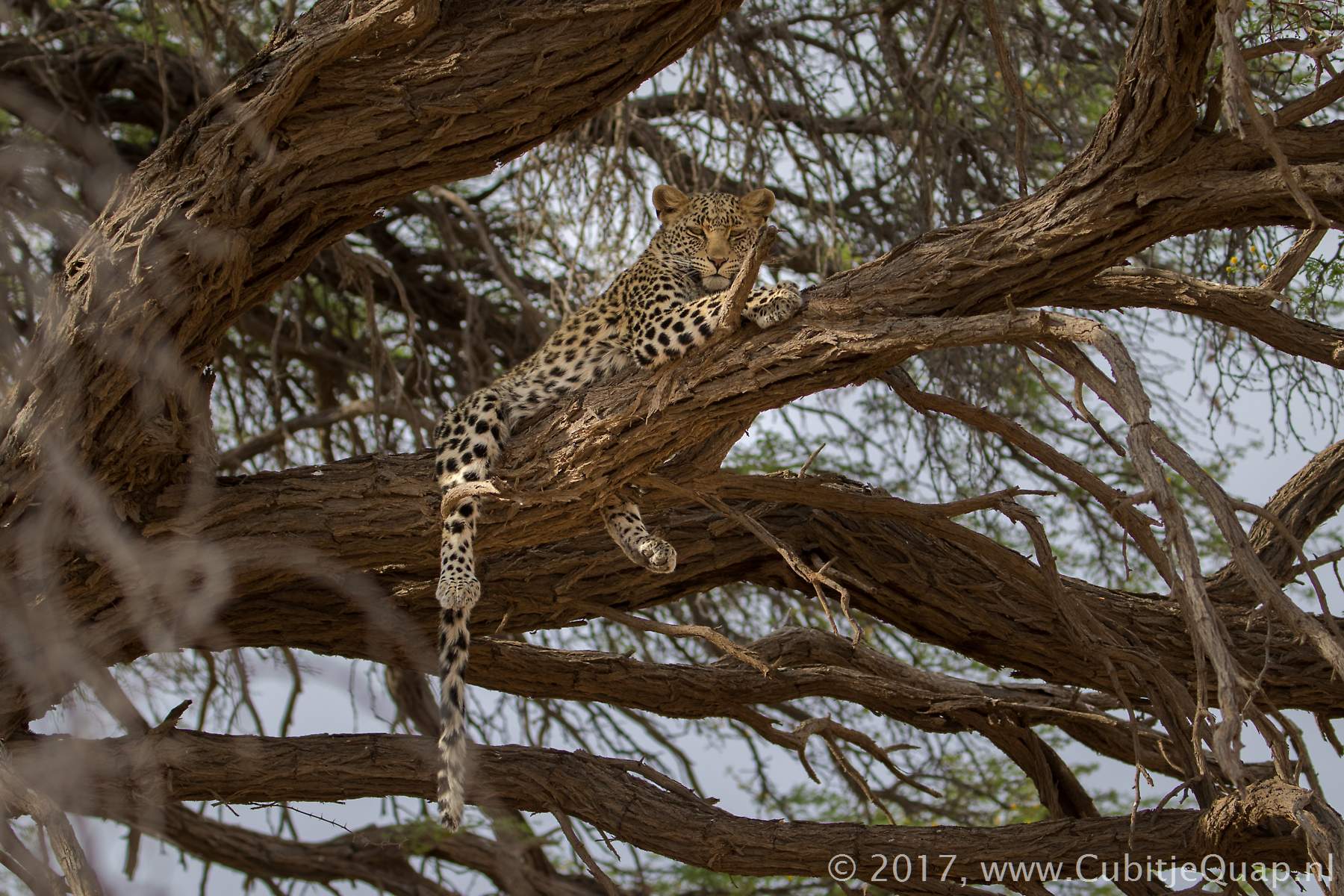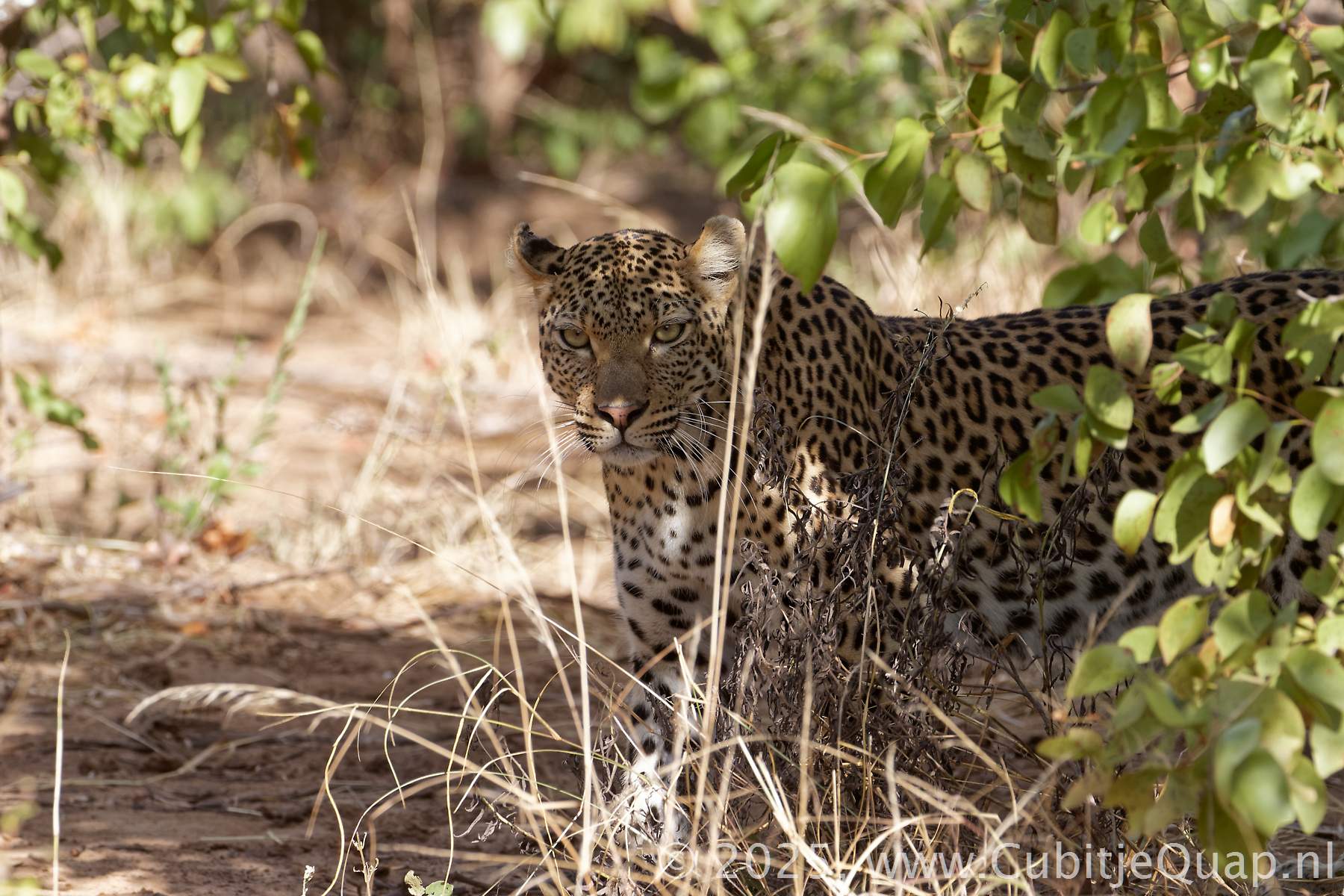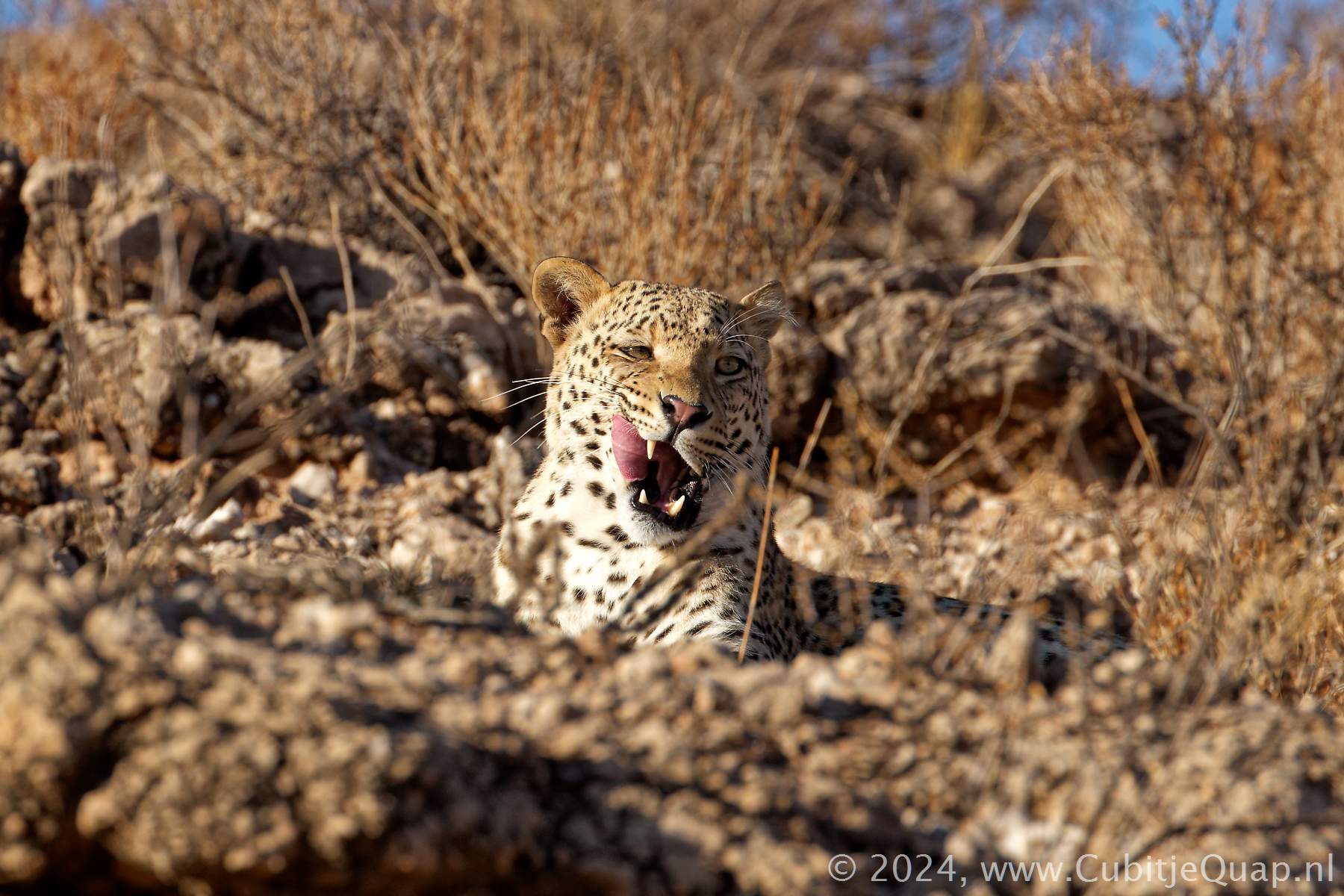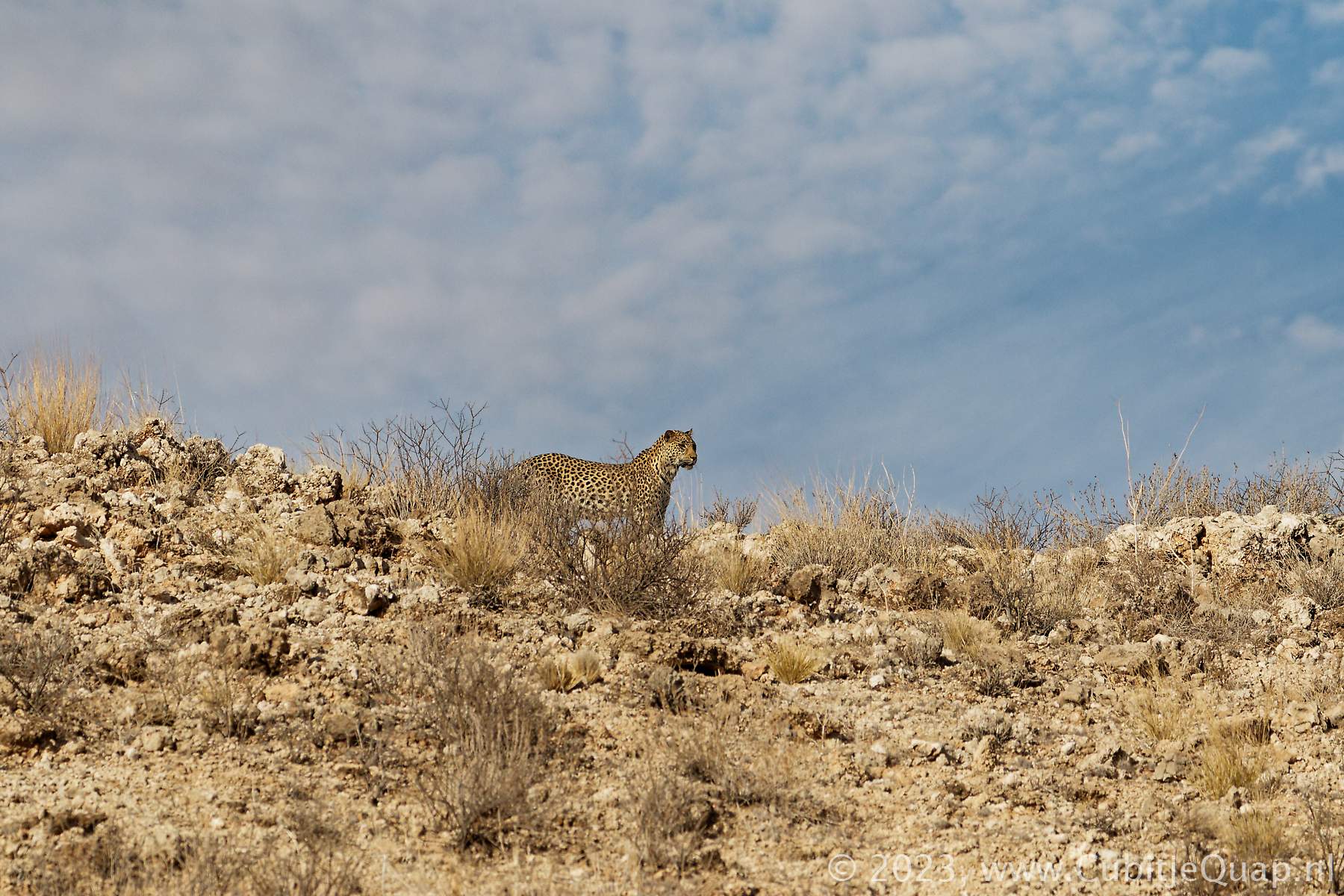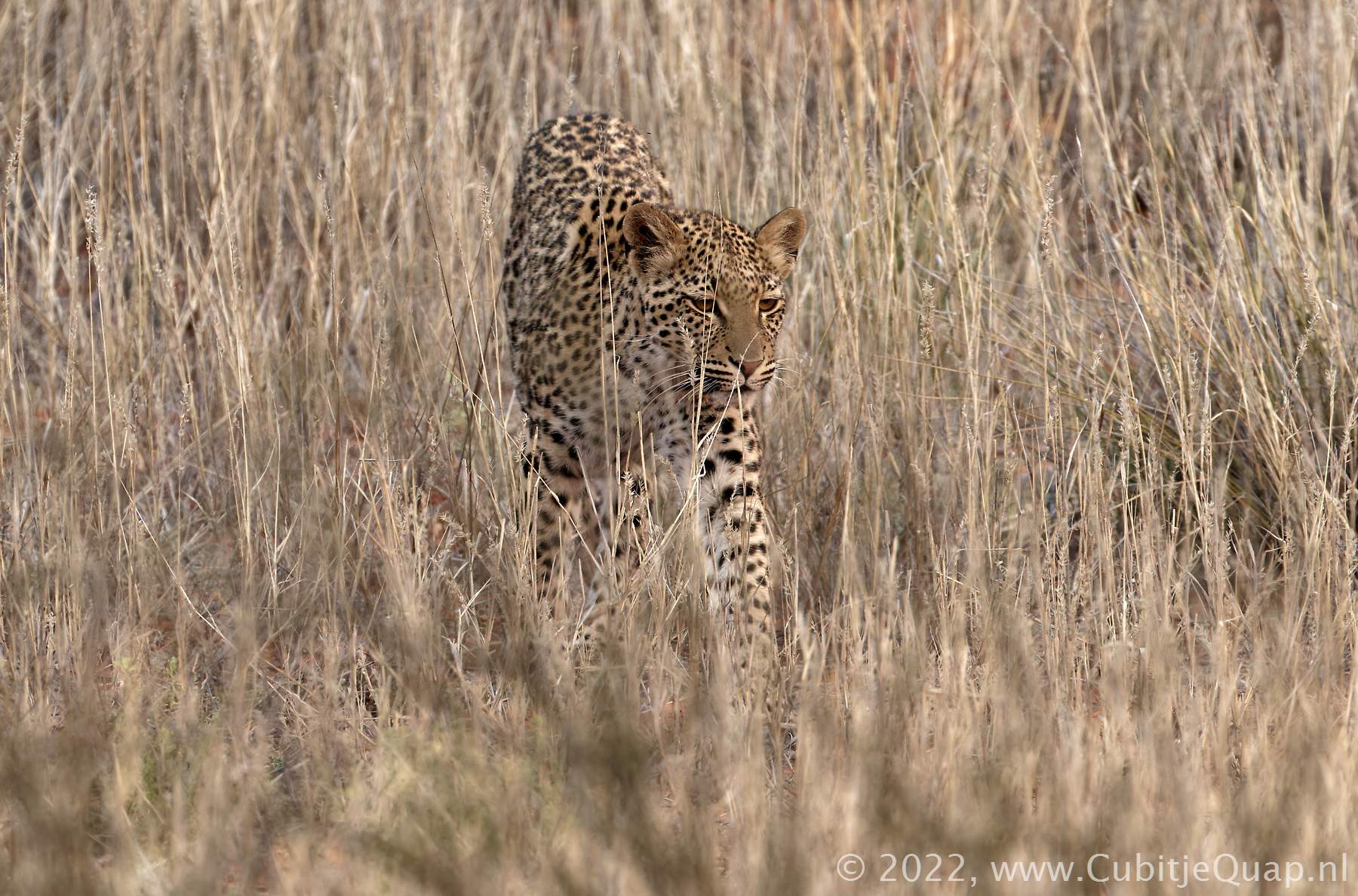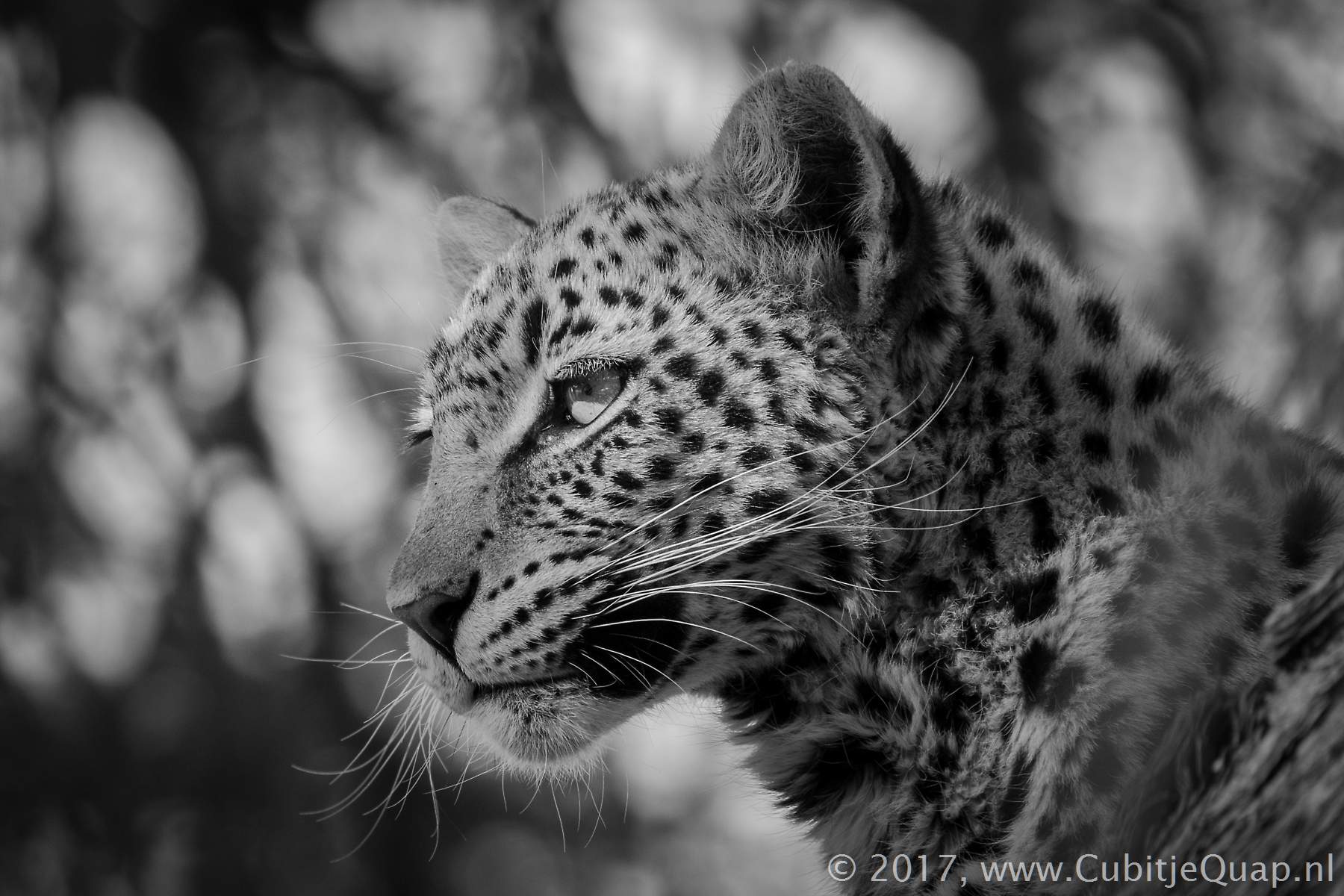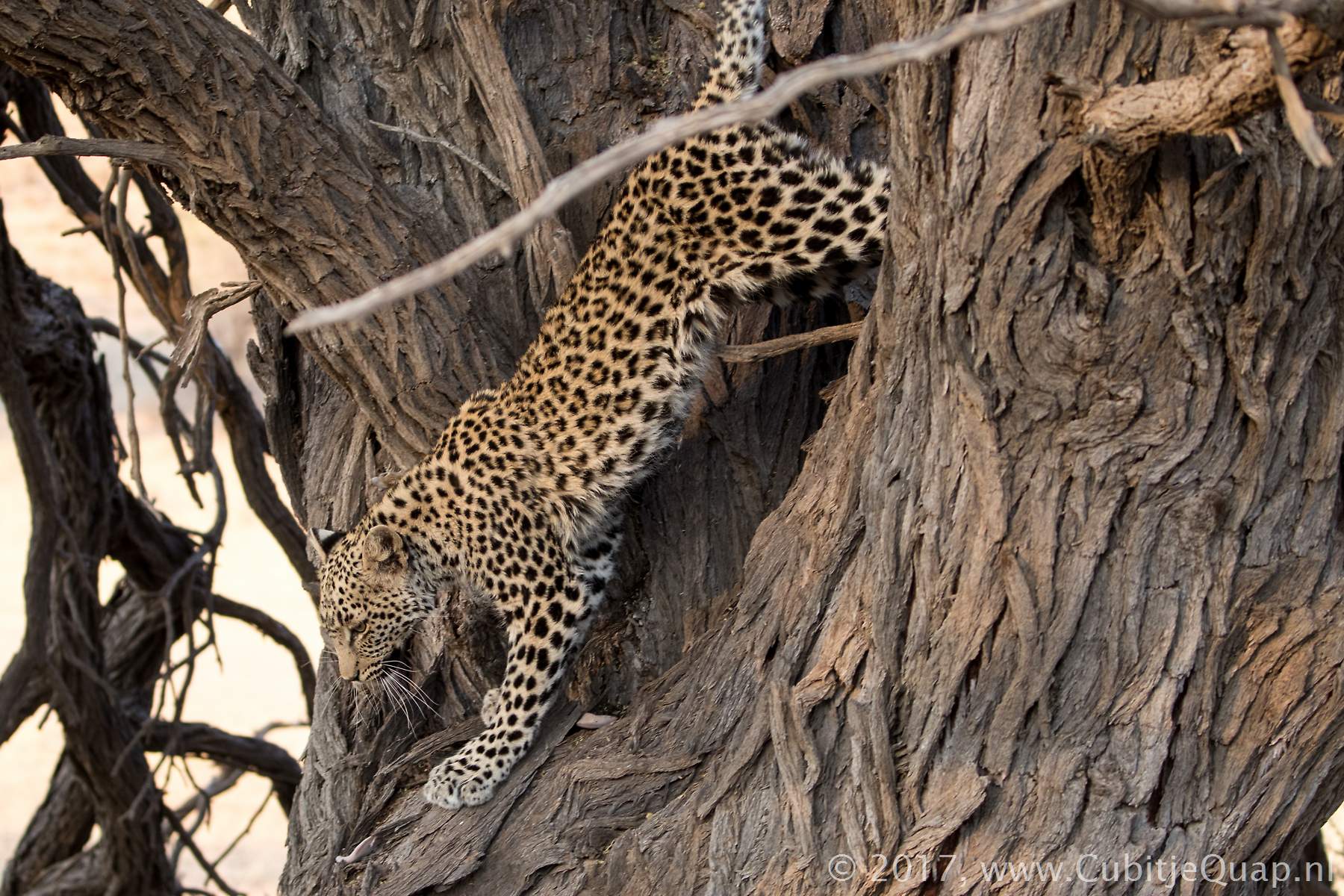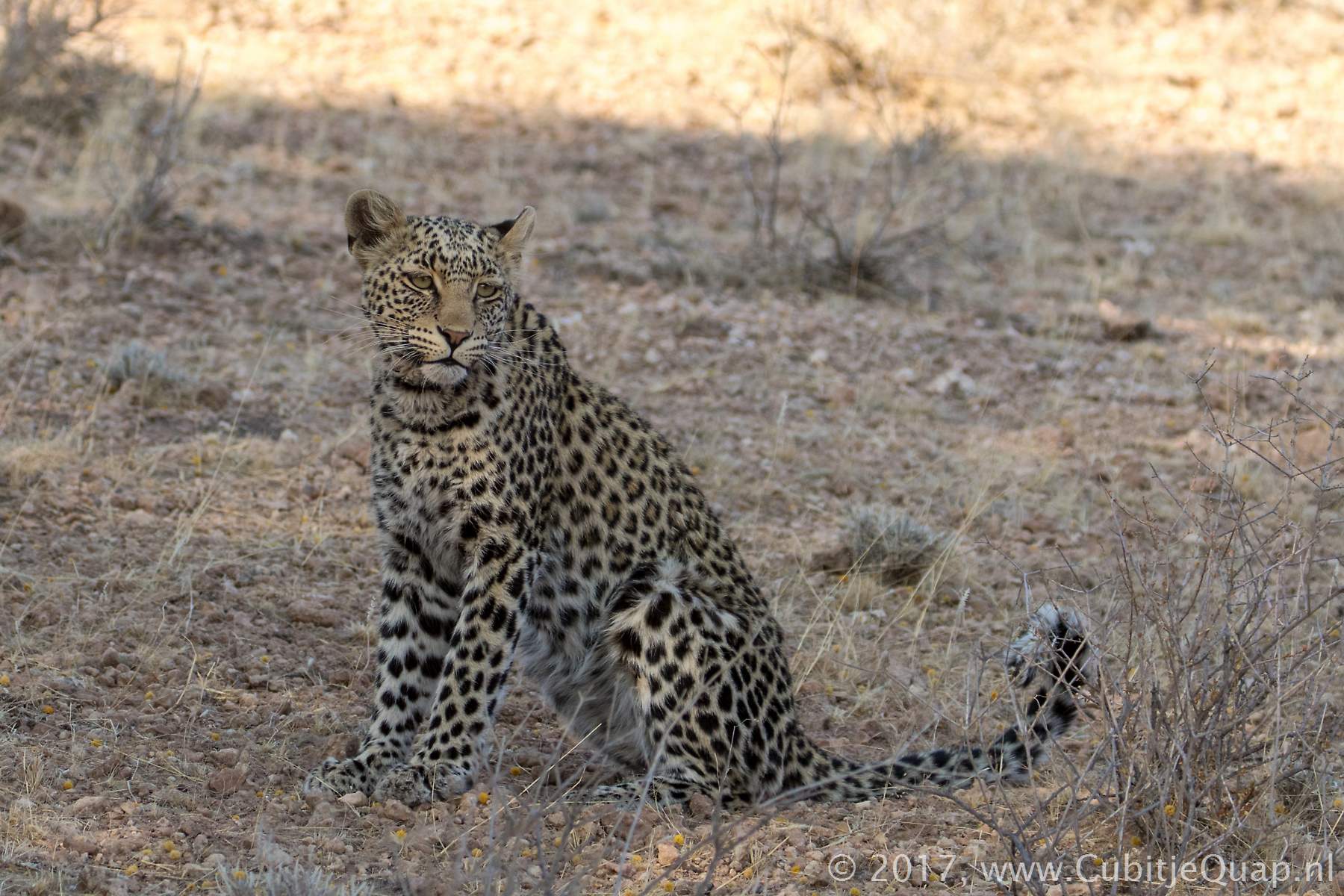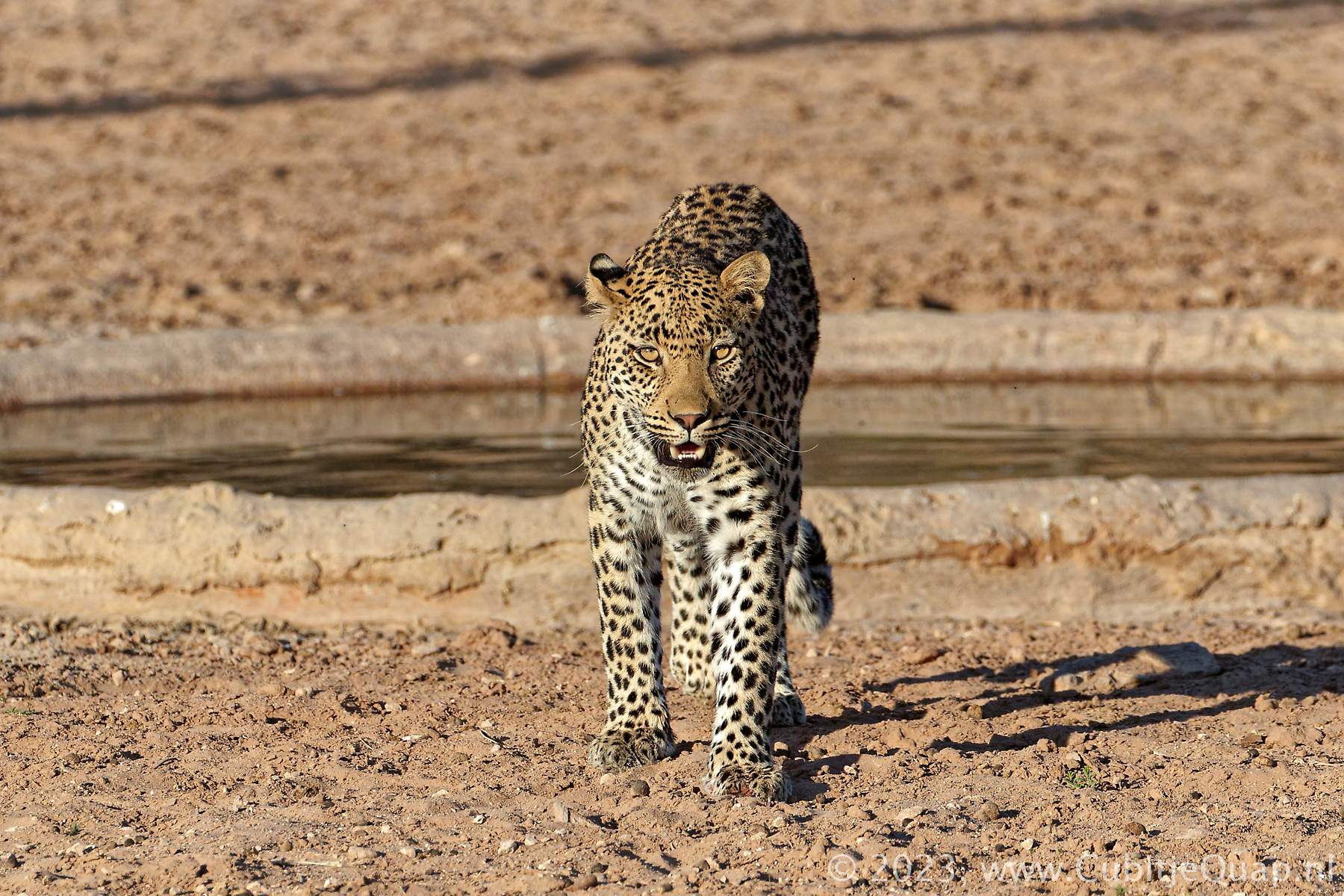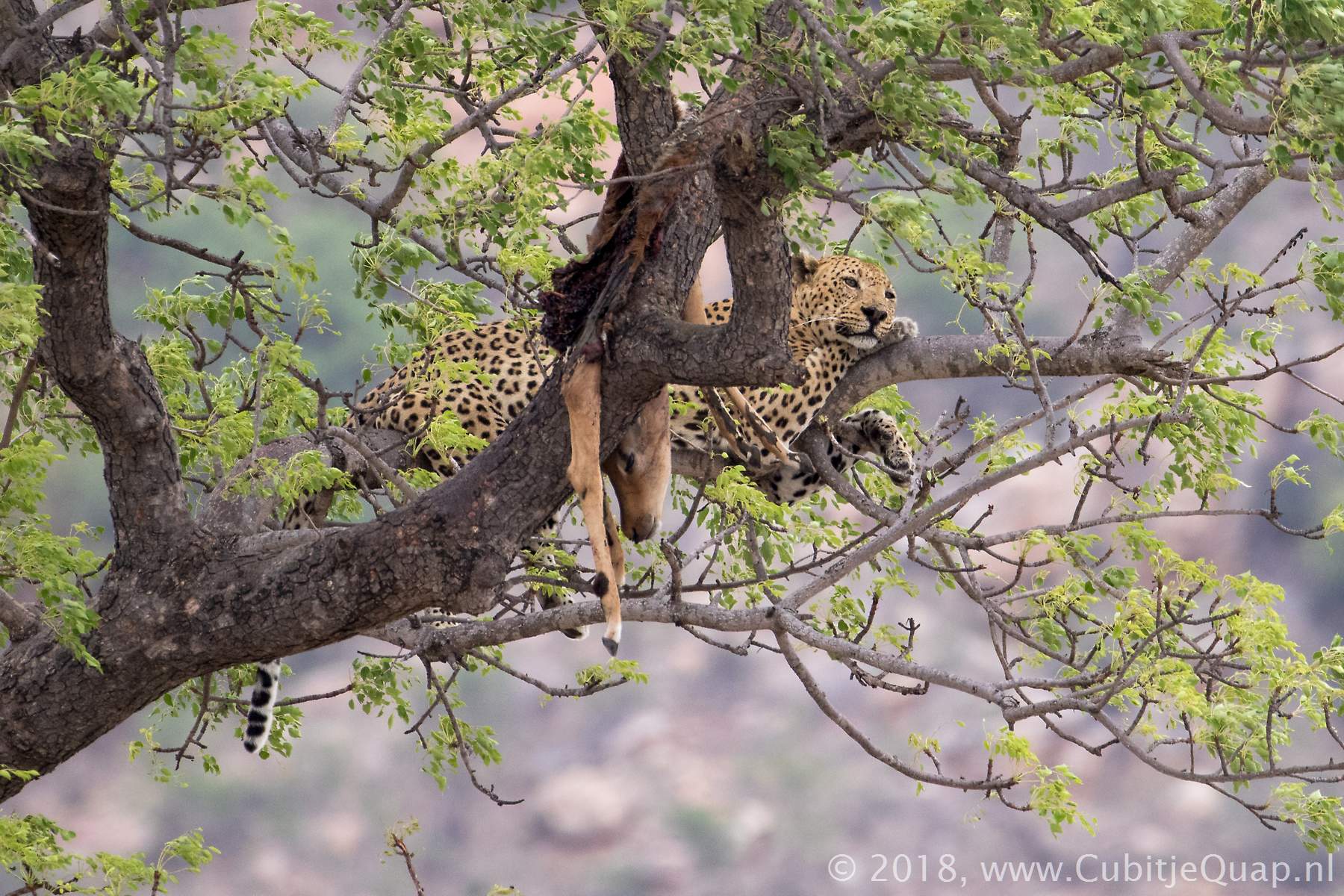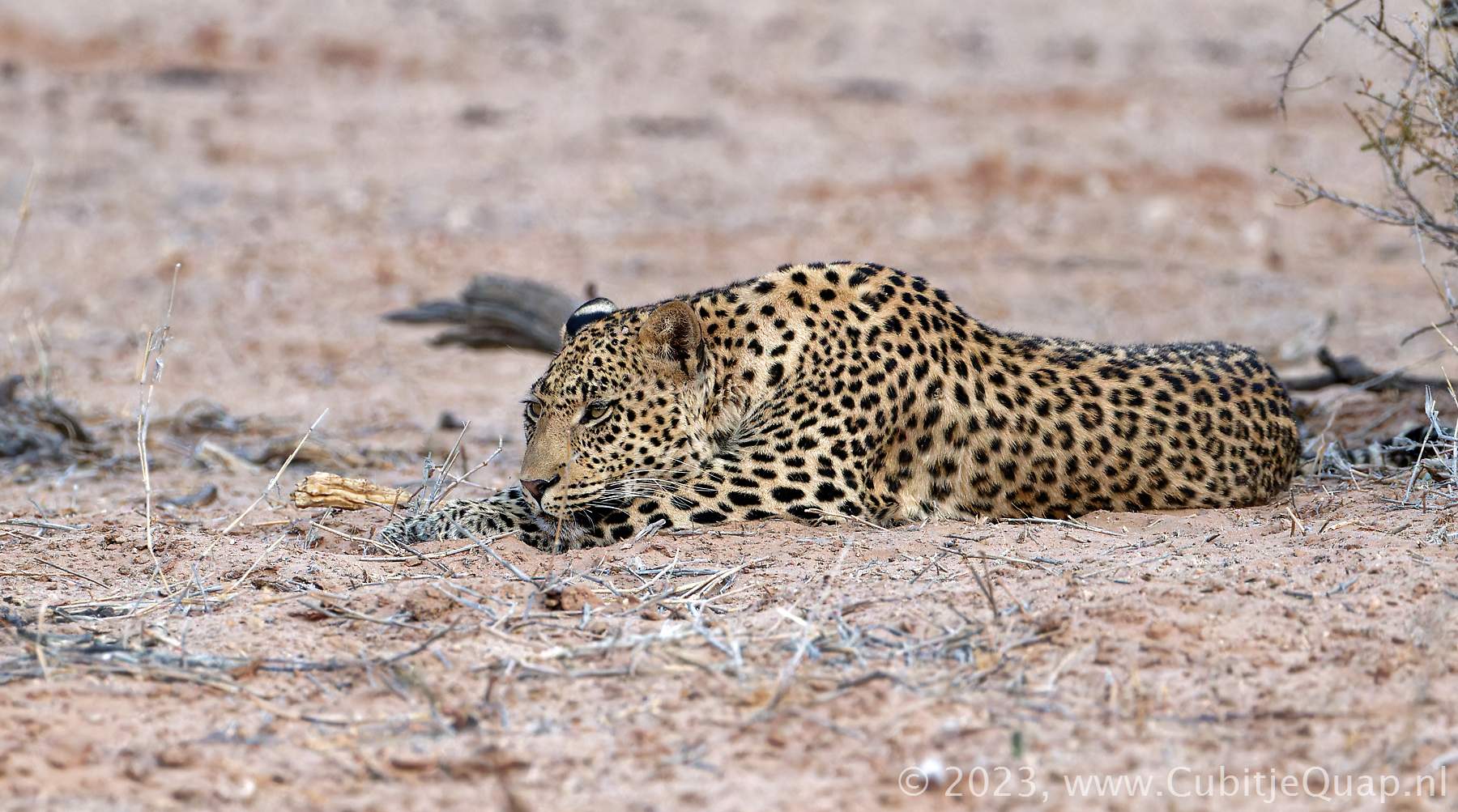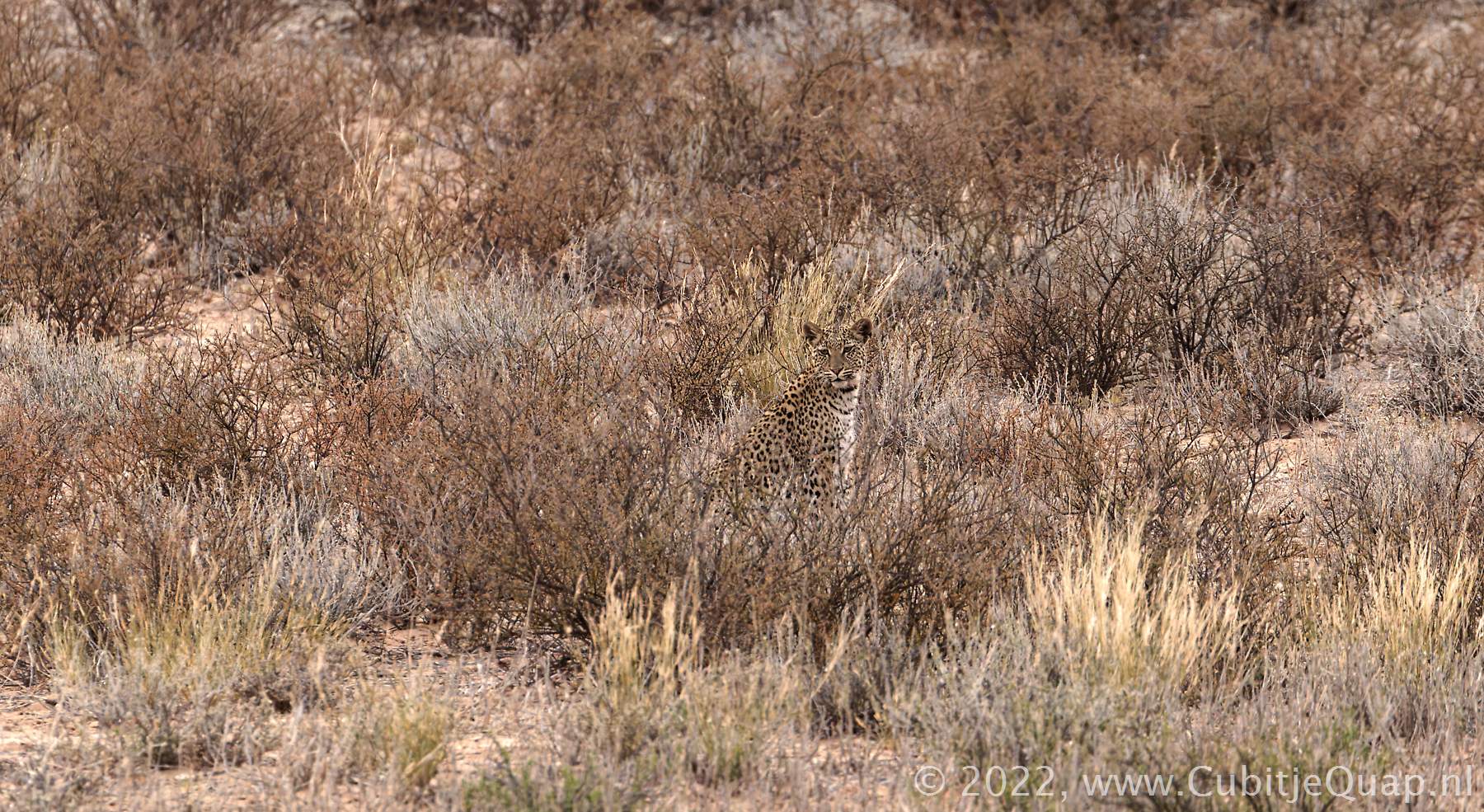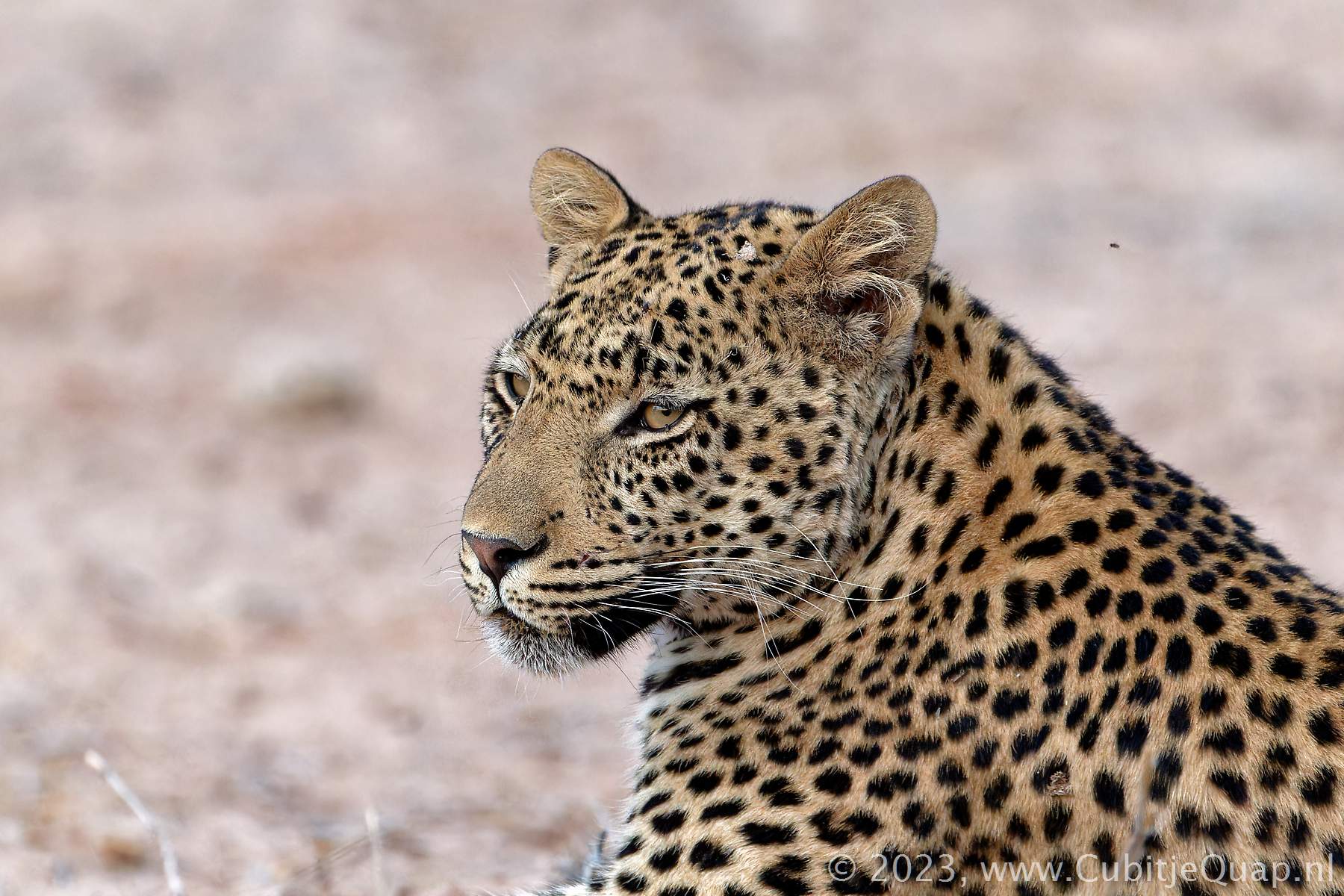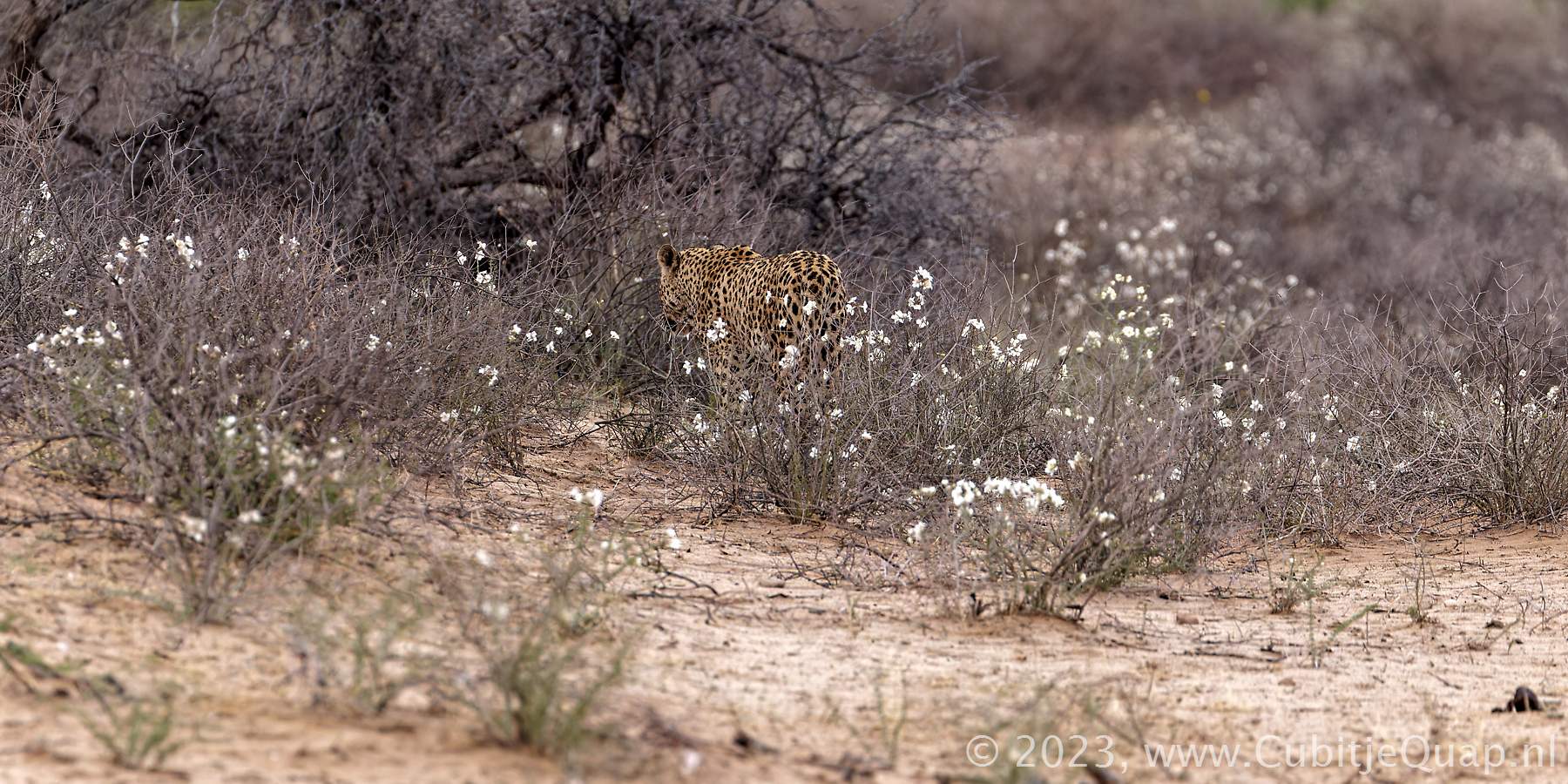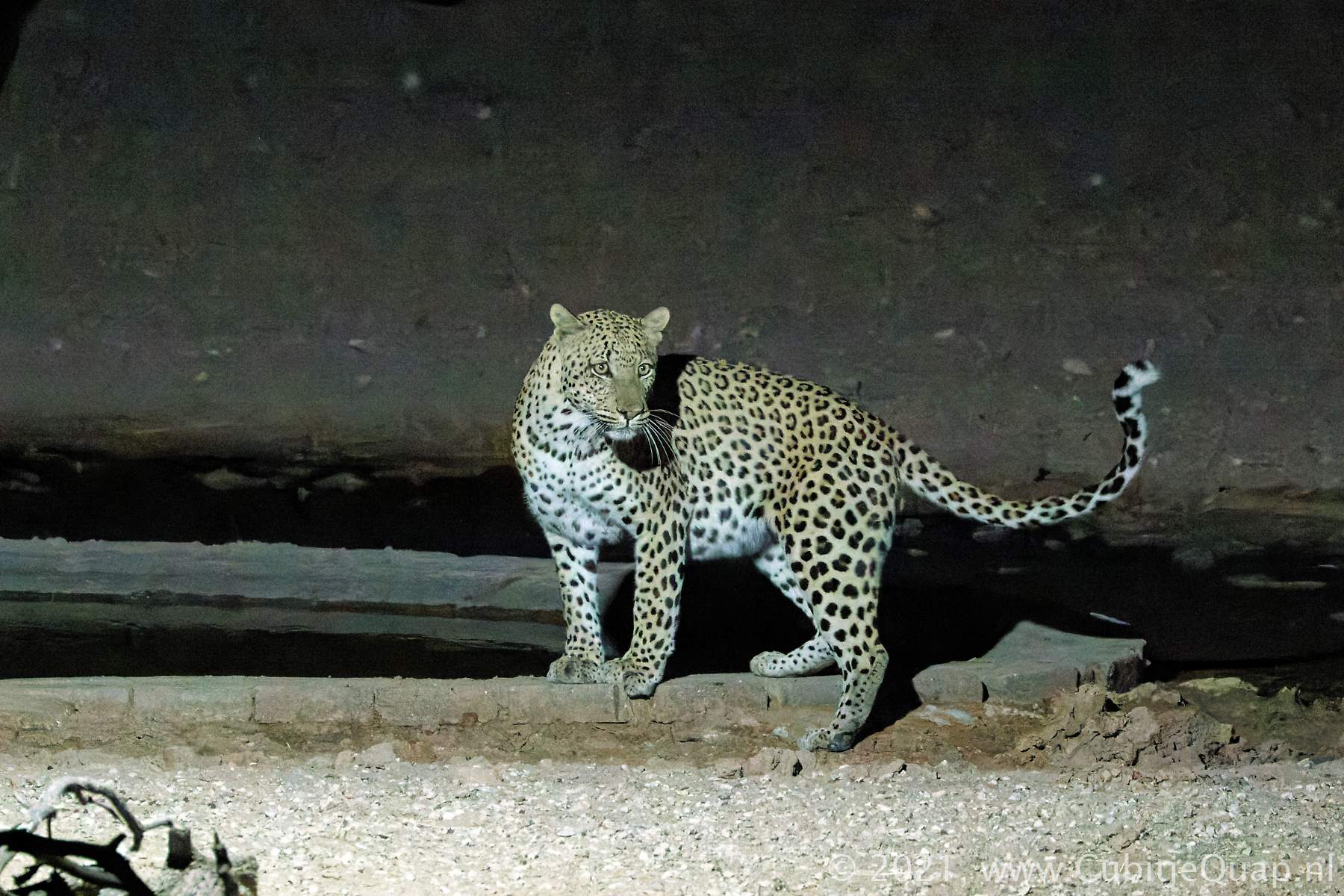Leopard
Appearance
Total length 160 - 210 cm; tail 68 - 110 cm; shoulder height 70 - 80 cm; mass 20 - 90 kg (male) 17 - 60 kg (female)
An elegant, powerfully built cat, with a beautiful spotted coat. The basic body colour varies from almost white to organge-russet, with black spots on the legs, flanks, hindquarters and head. The spots on the rest of the body consist of rosettes or broken circles of irregular black spots. The tail is about half of the total length, with rosette spots above and a white tip. The ears are rounded and white-tipped. The underparts are usually white to off-white. Cubs have dark, wooly hair and less-distinct spots.
Habitat
It has an extremely wide habitat tolerance, from high mountains to coastal plain, from low- to highrainfall areas. South of the Orange river it has been eradicated from all but the more mountainous and rugged areas. Although drinking water is not essential, cover is an essential requirement.
Behaviour
Normally solitary except when a pair come together to mate or when a female is accompanied by cubs. Although it is mainly active at night, in areas where it is not disturbed it can be seen moving during the cooler daylight hours. Although it is mainly terrestrial it is a good climber and swimmer. Males mark and defend a territory against other males, and a male's territory may overlap that of several females. Territories are marked with urine, droppings and tree-scratching points. Home ranges may be as small as 10 square kilometers or cover areas of several hundred square kilometers. The size is largely dependent on the availability of food. Although normally silent the leopard does have a characteristic call that has been likened to the sound of a coarse saw cutting wood. Leopards stalk and then pounce on their prey and do not rely on running at high speed like the cheetah.
Food
A broad diet, ranging from insects, rodents and birds to medium-sized and occasionally large antelope. In some rocky and mountainous areas dassies make up an important part of the diet. It will on occasion kill more than its immediate needs, the surplus being stored for later use. Kills may be dragged under dense bush, amongst rocks, or in some areas into trees out of reach of other predators. Leopard readily feed from rotten carcasses.
Kgalagadi Transfrontier Park Leopard Project
In 2011 a project was started to study the ecology of the Kgalagadi leopards. Using both current and historic sightings, this project collects information on the Kgalagadi leopards.
Using the Identification guides compiled by Matthew Schurch, we have managed to identify two of the three leopards we have sighted in the Kgalagadi Transfrontier Park over the years. Matthew has kindly provided some more information.
The individual we spotted in 2006 has been registered as L-52, he or she has been sighted in the 13th boorgat to near Mata Mata range. From our photographs Matthew thinks this is probably a female leopard. In 2011 we had a very brief meeting with the female named Langklaas, just north of Nossob camp.
The third leopard we spotted (also in 2011) remained a mystery to us, but here Matthew could also help. This individual has been sighted in 2007 (no pictures available in the Identification guides) at Kaspersdraai, it then already showed signs of being of a reasonable age. So this individual was probably quite old, and it did not look so well in 2011. It is added to the Identification guide as L-81.
Interesting links
WikipediaKgalagadi Leopard Project homepageKgalagadi Leopard Project on facebook

